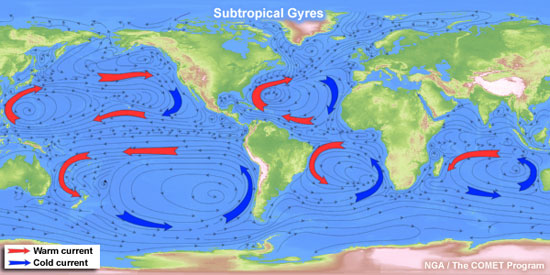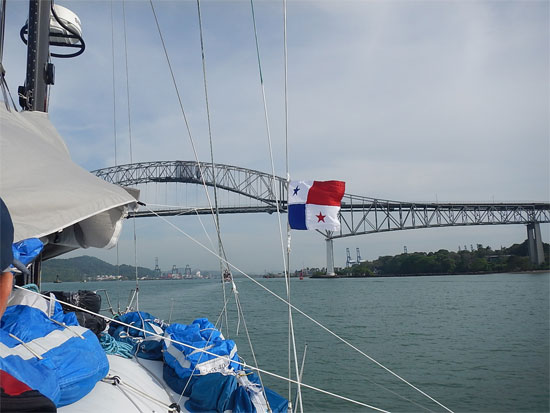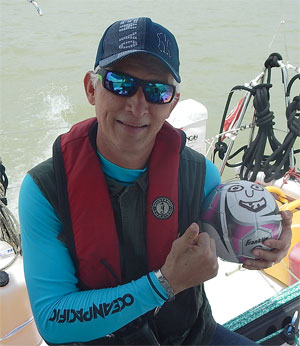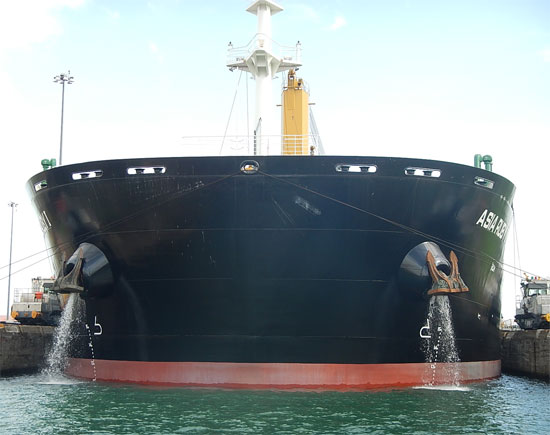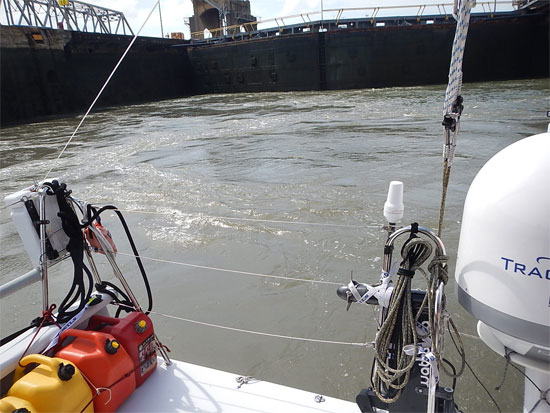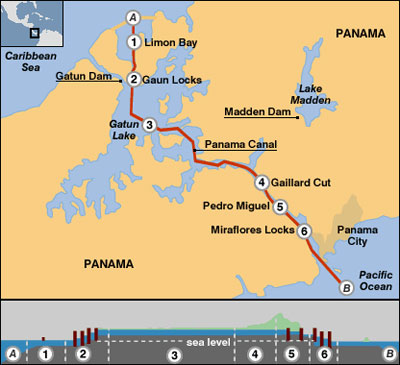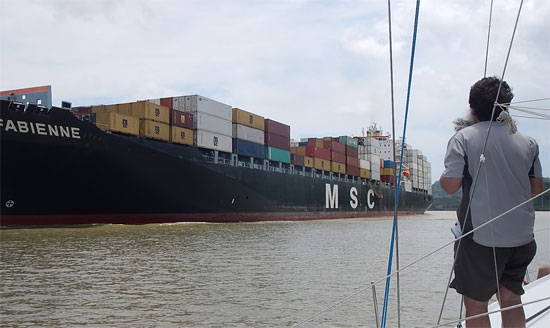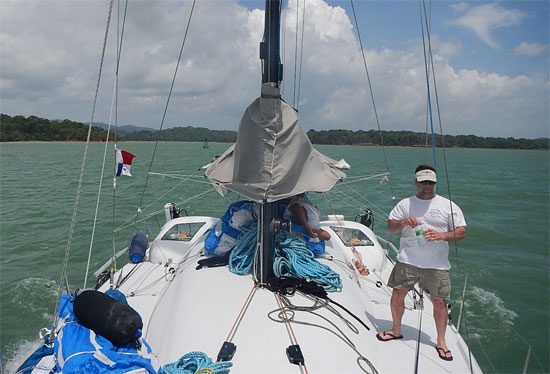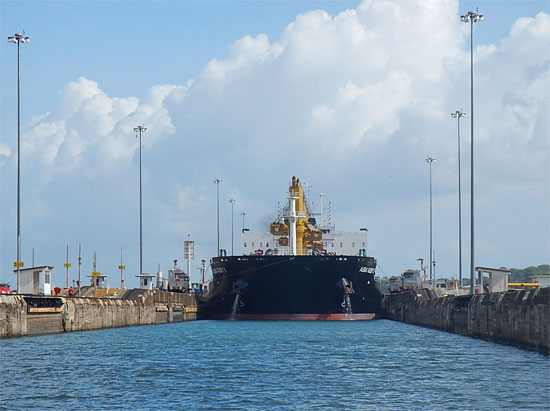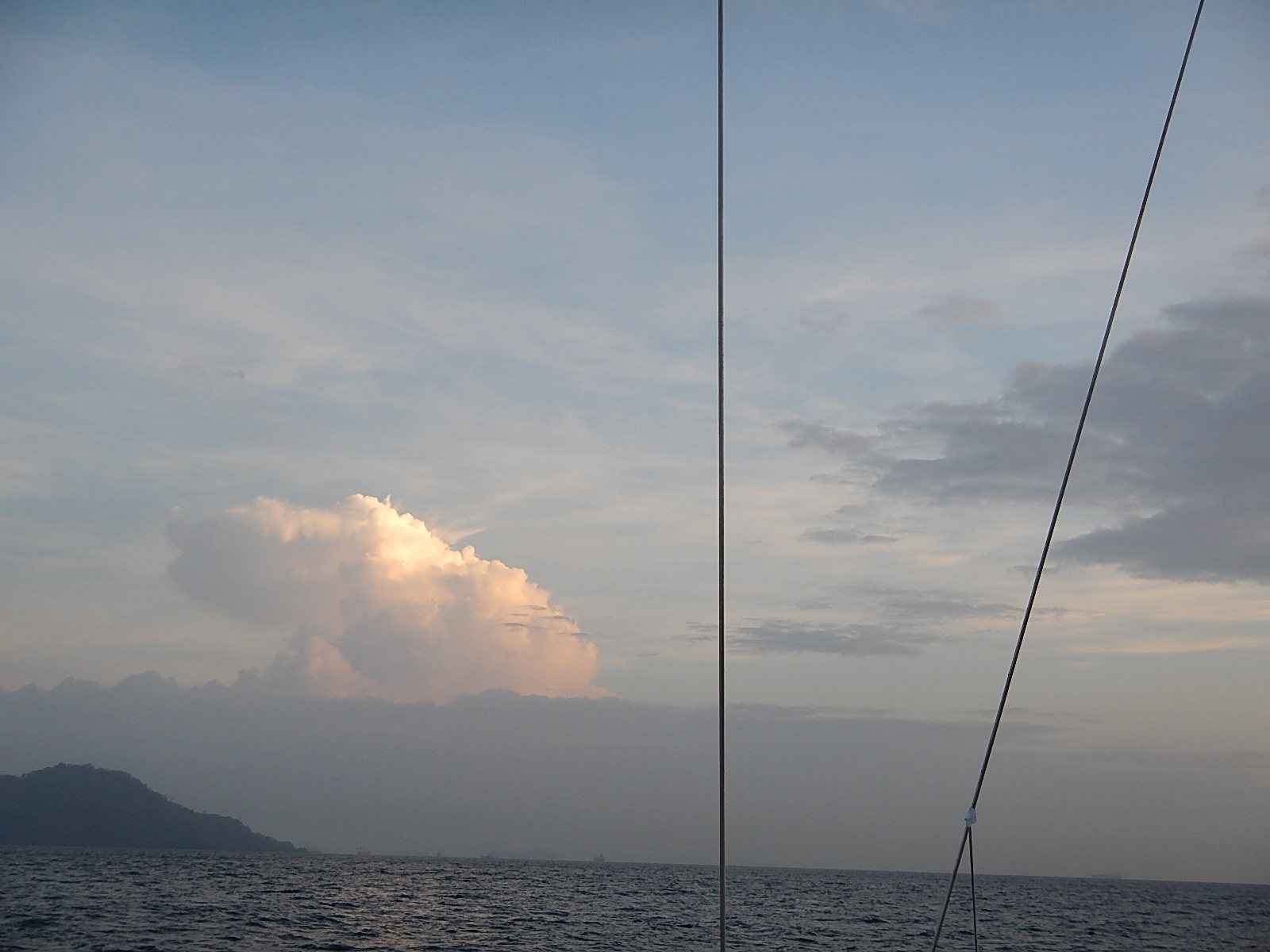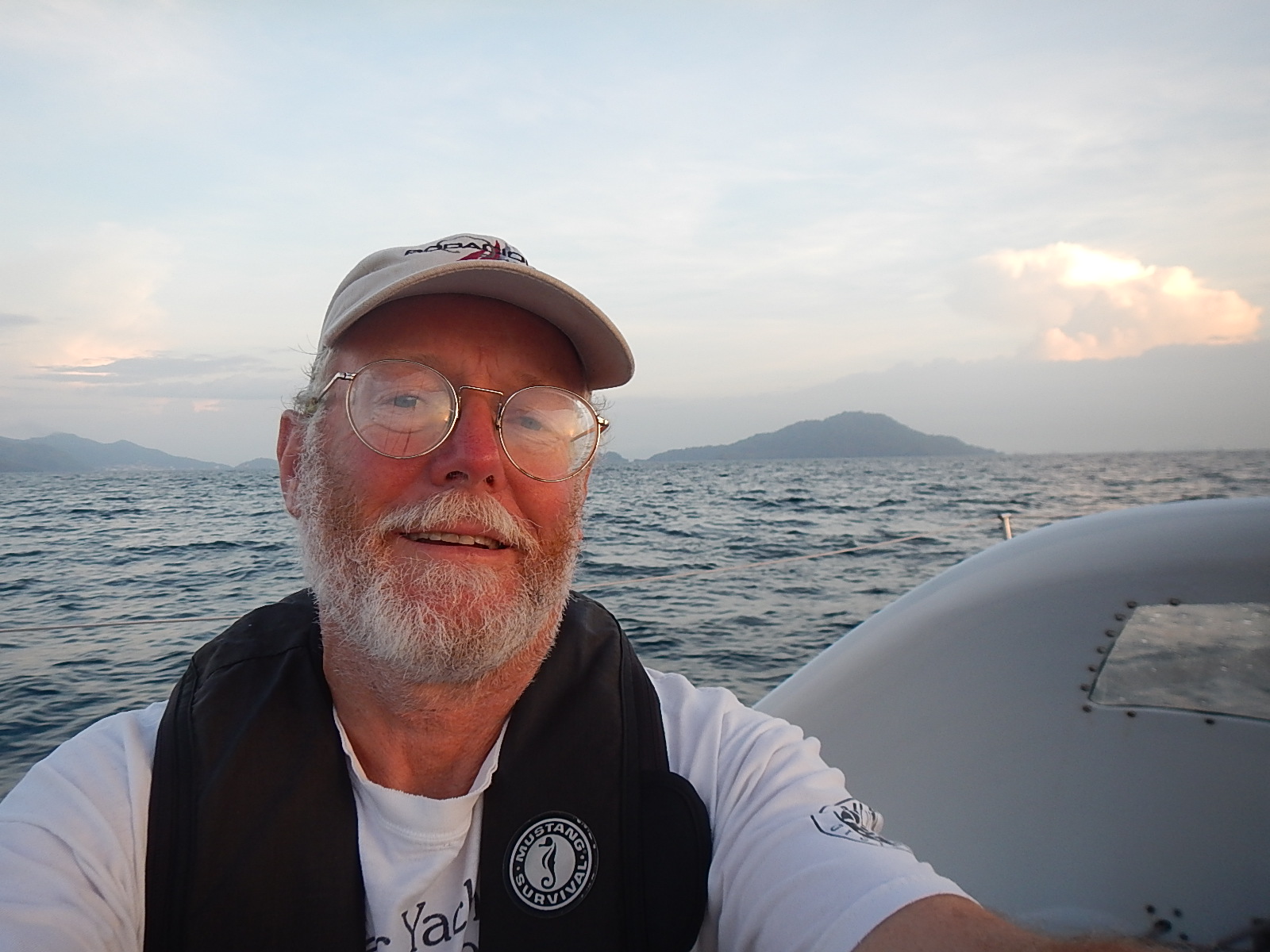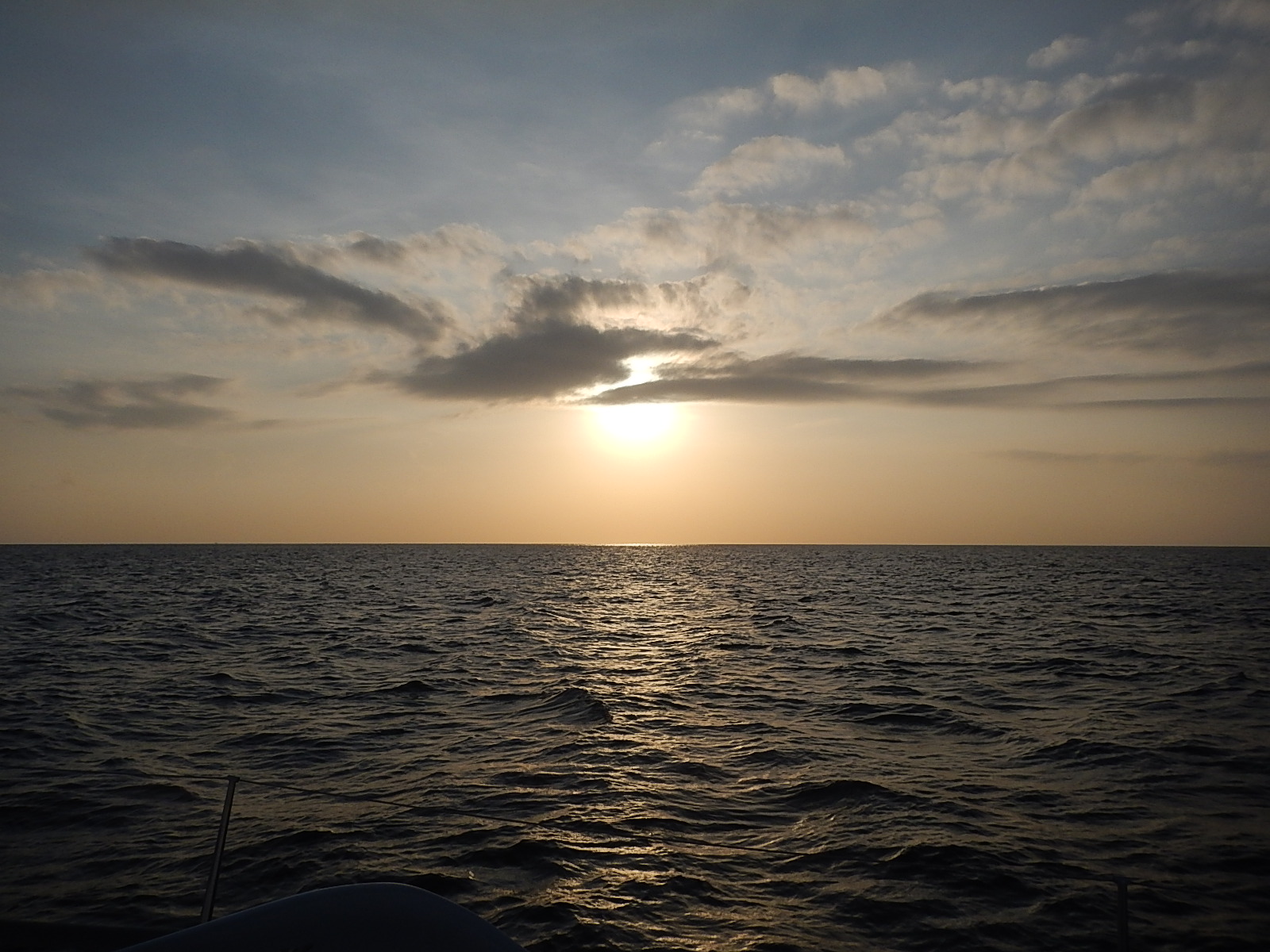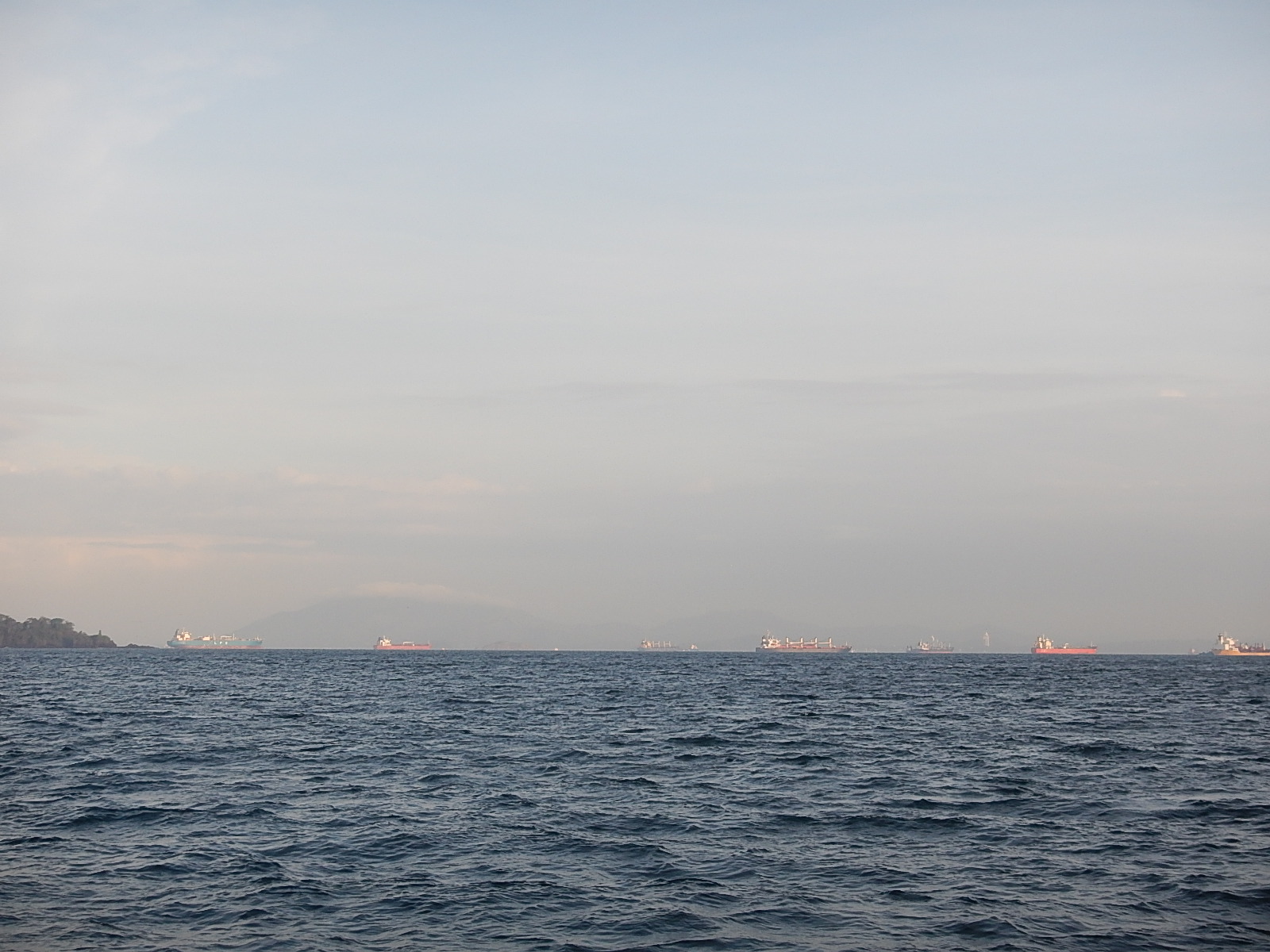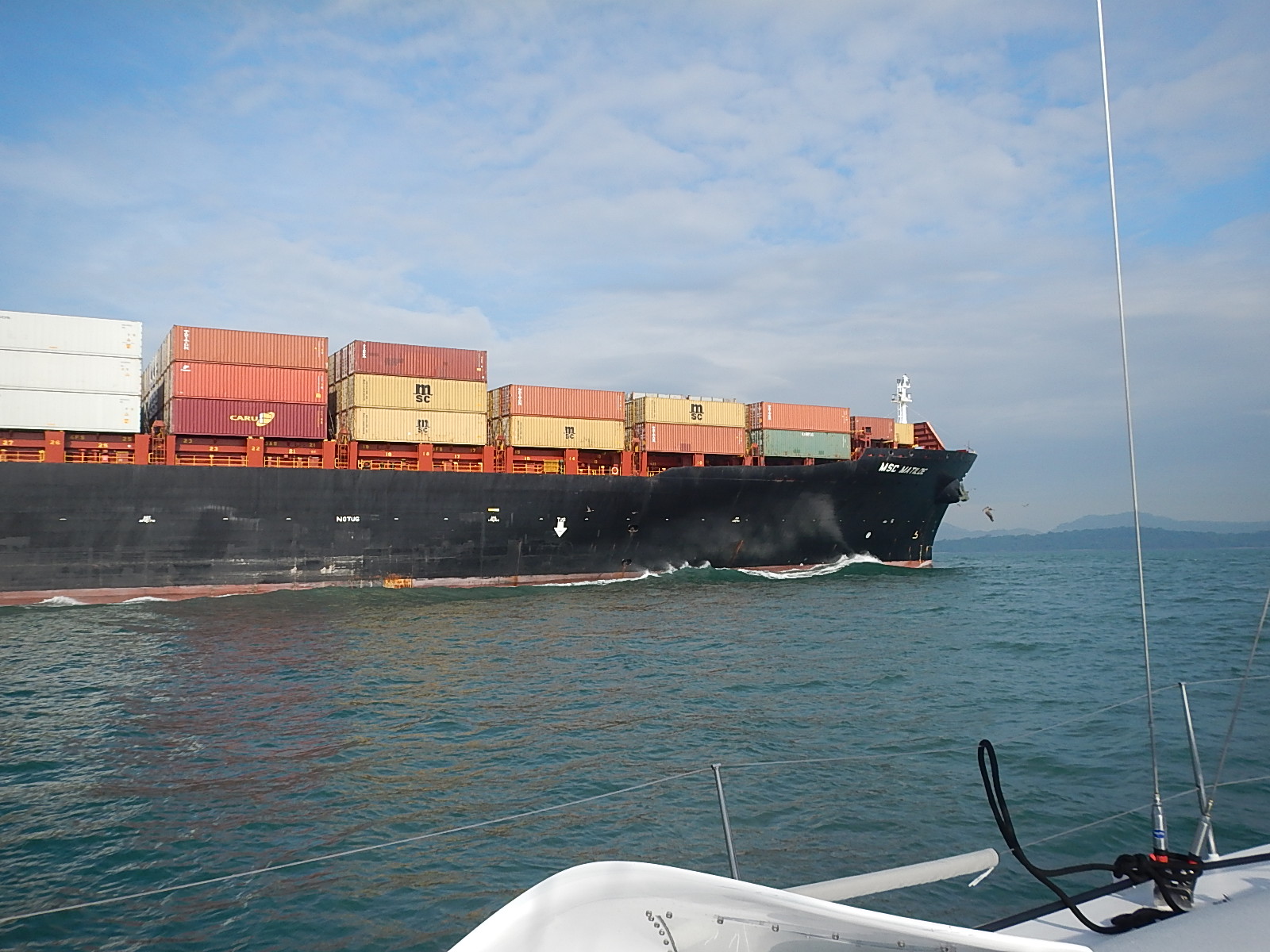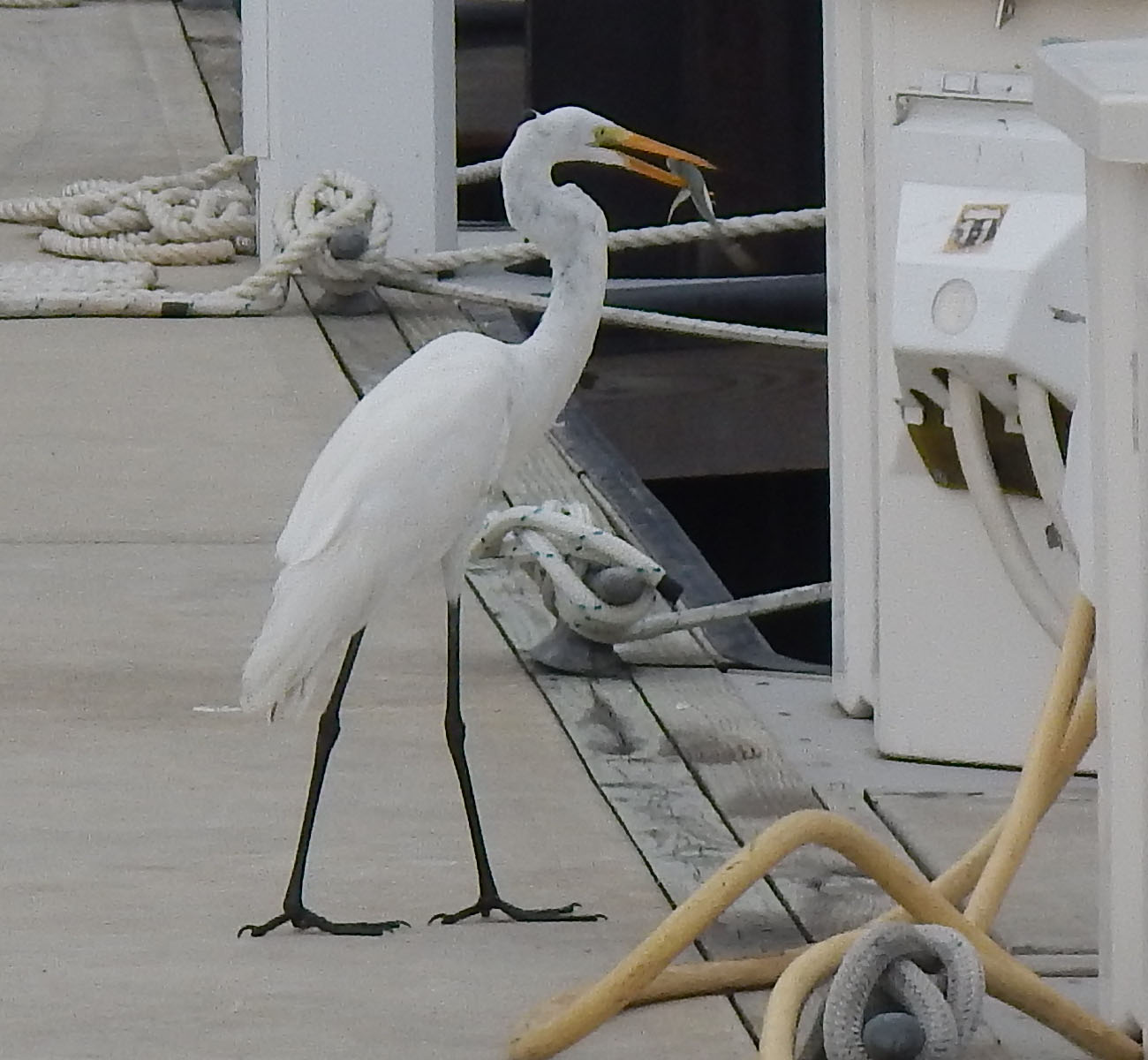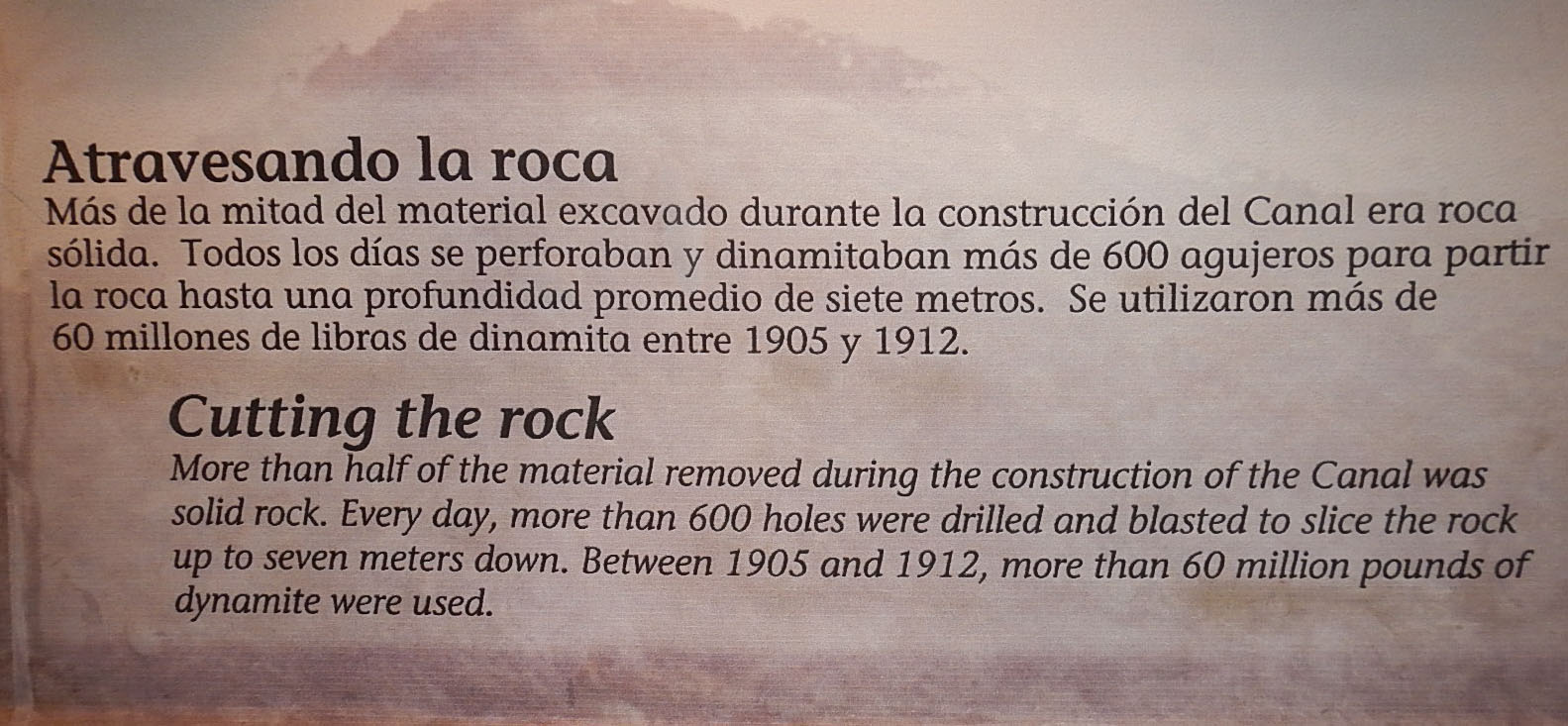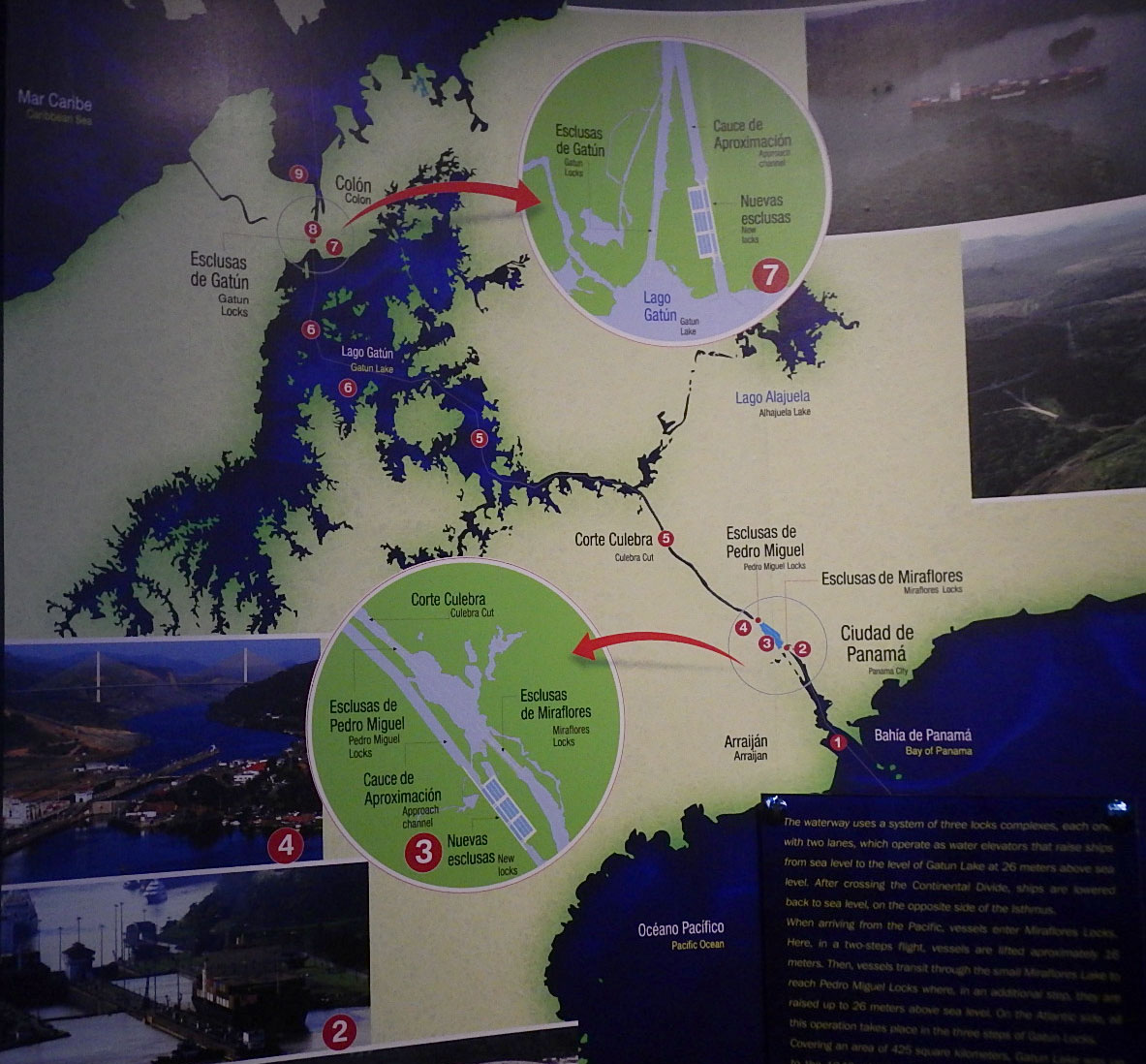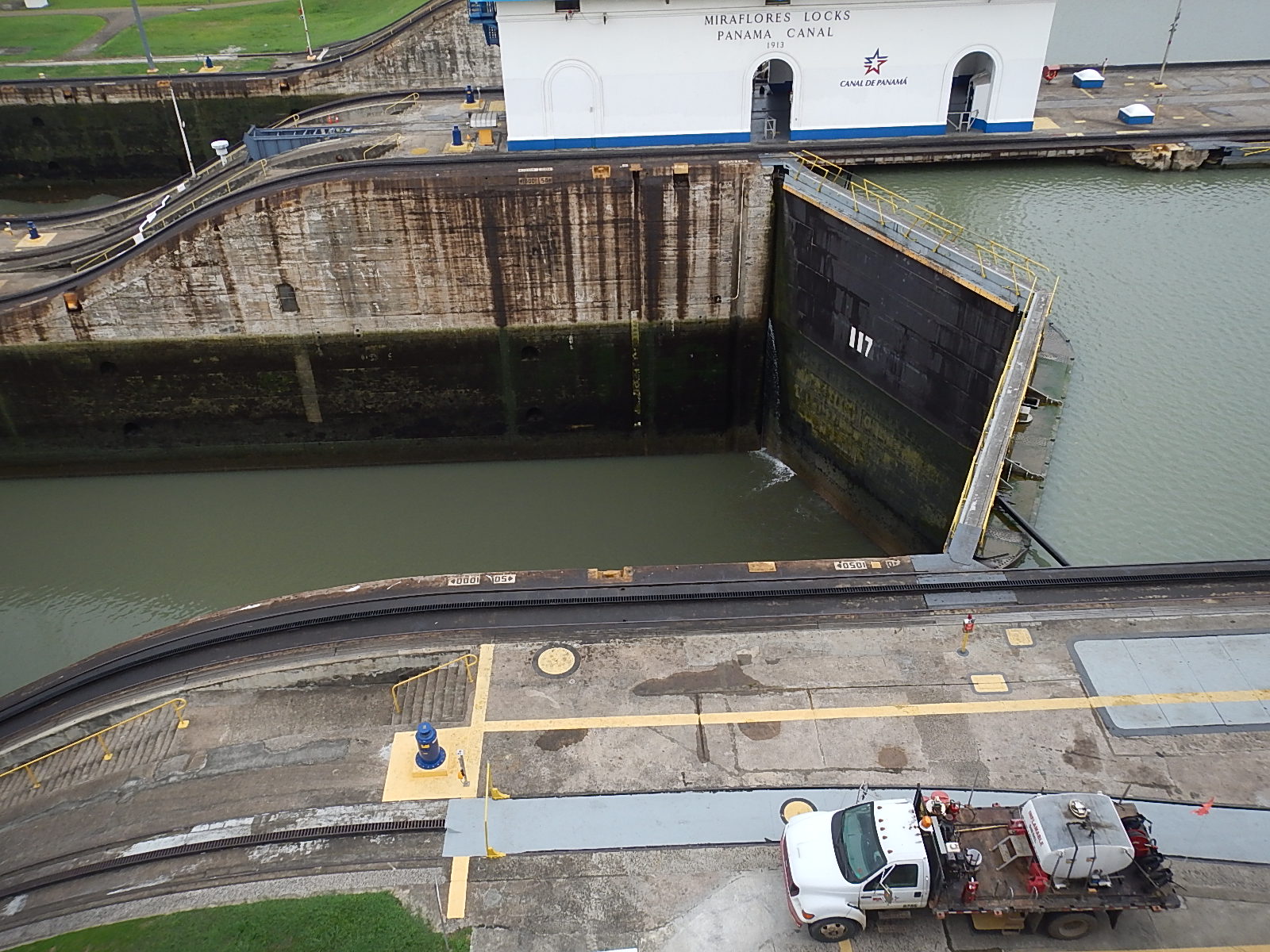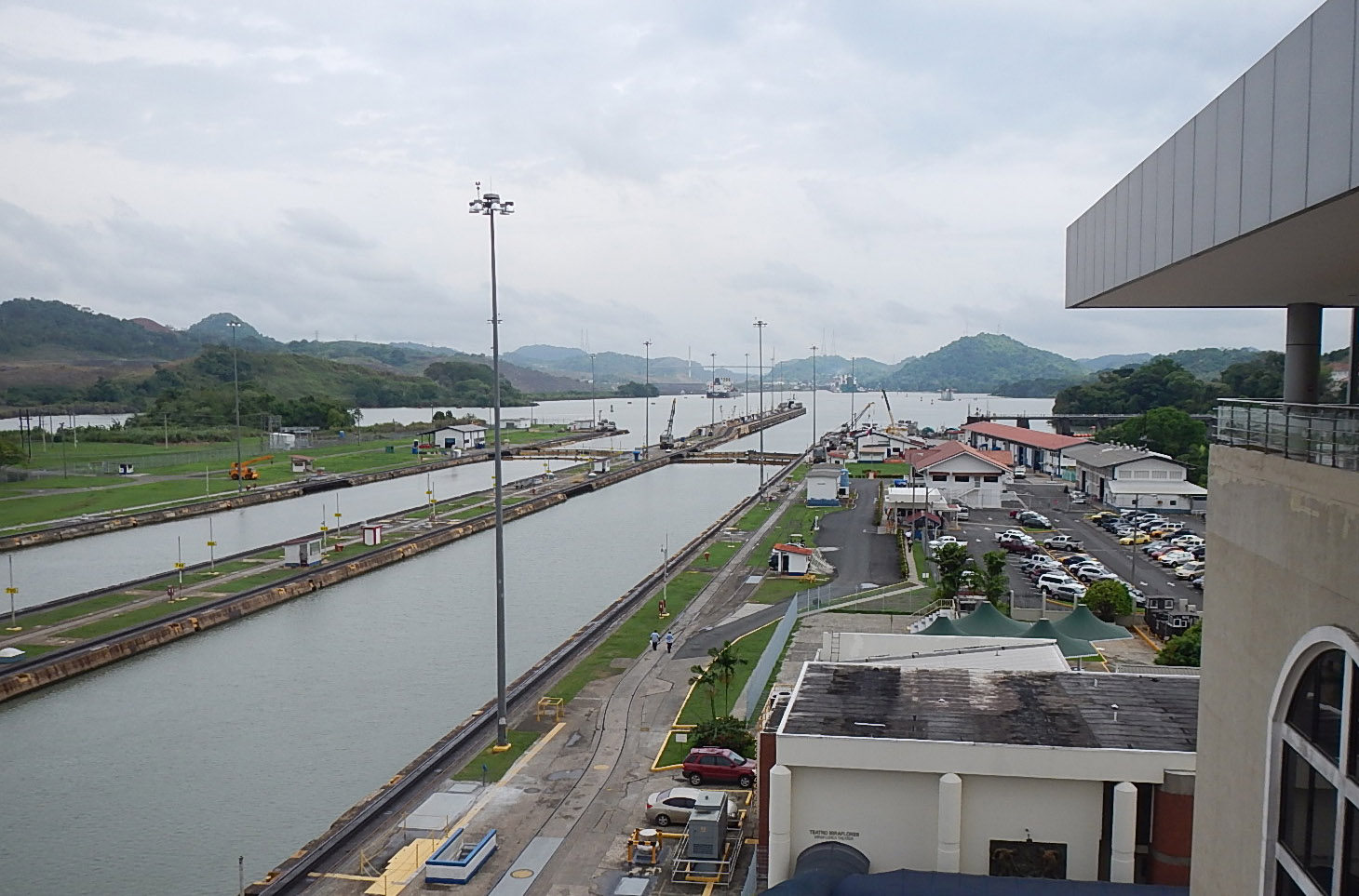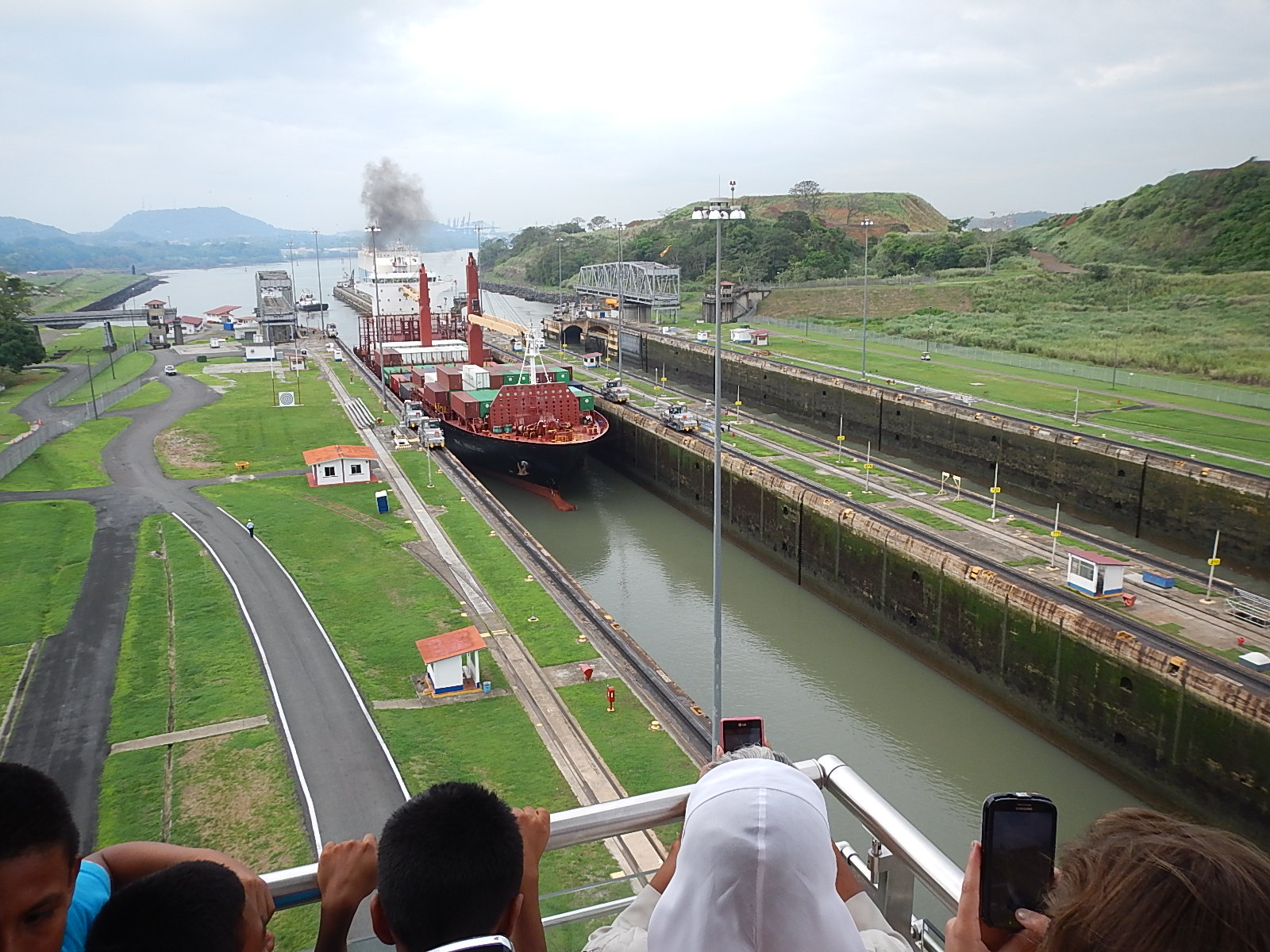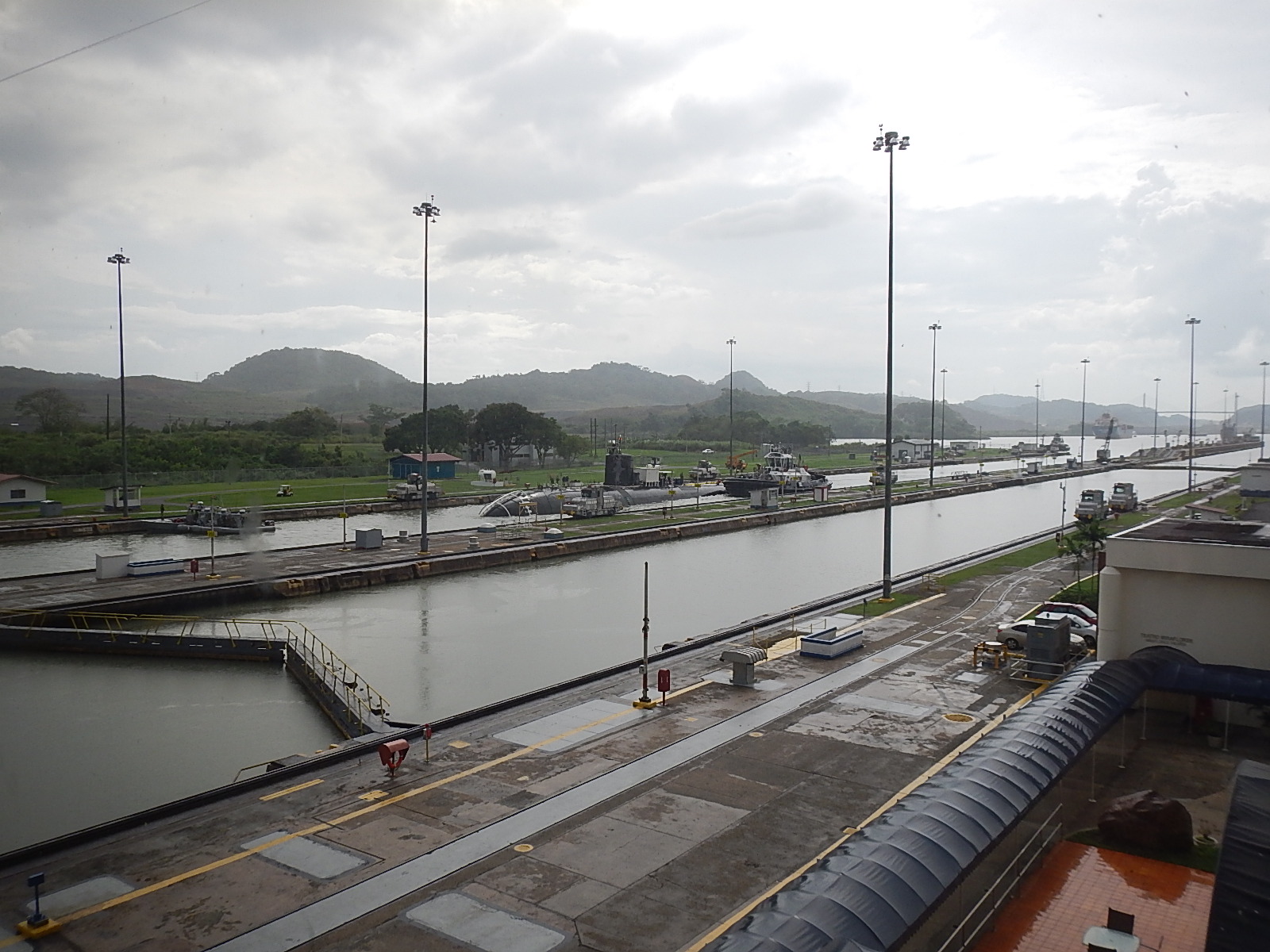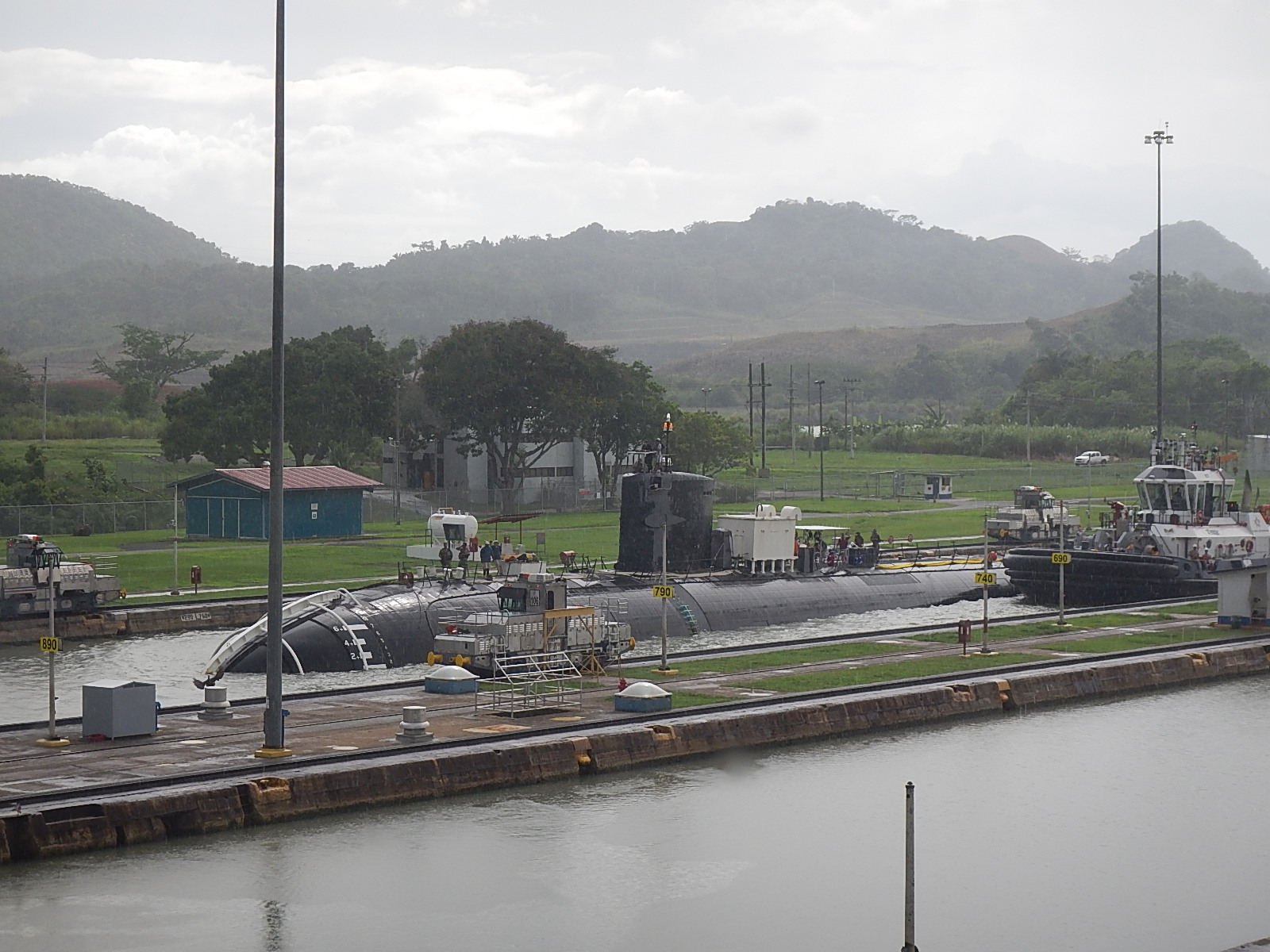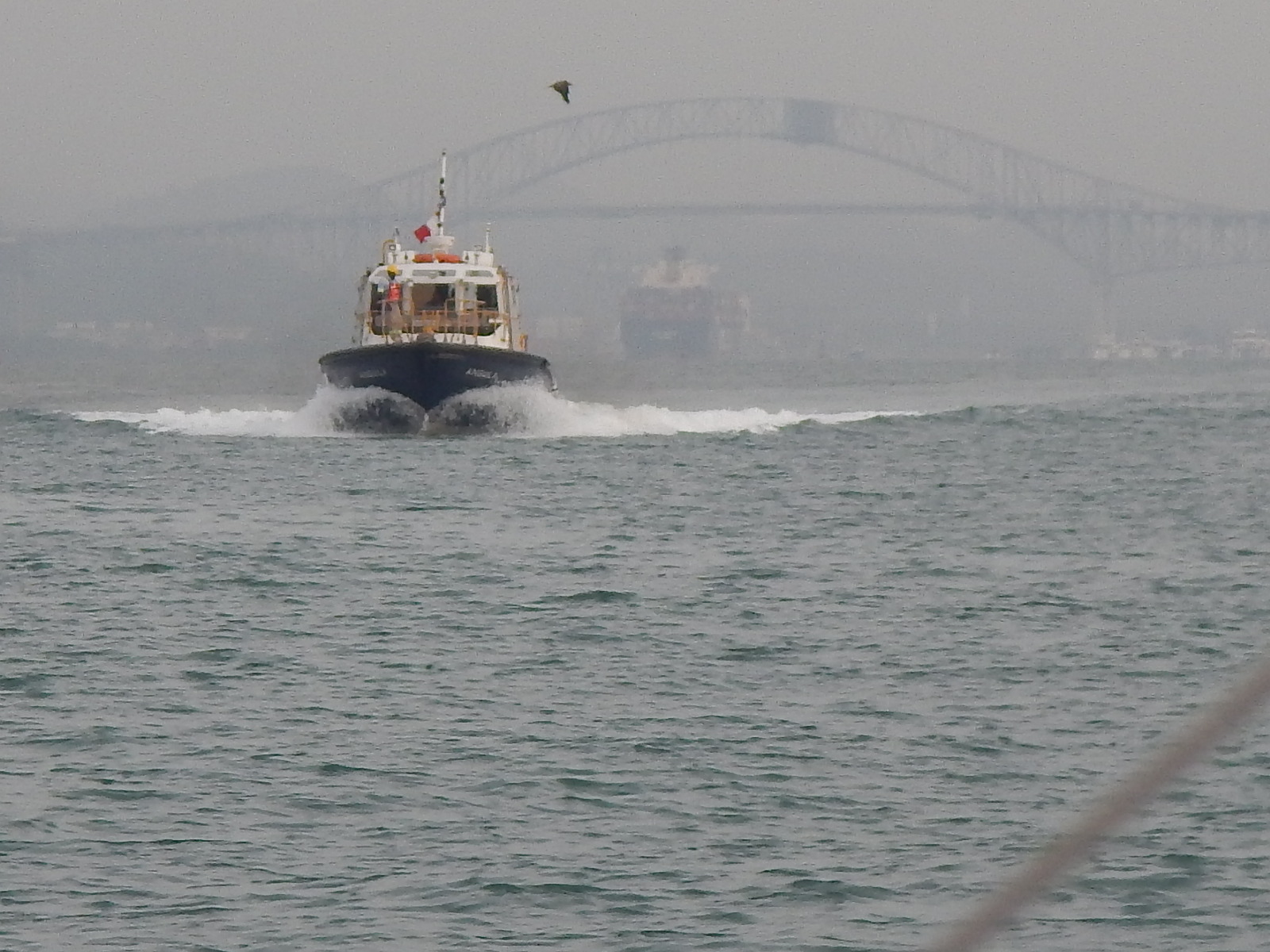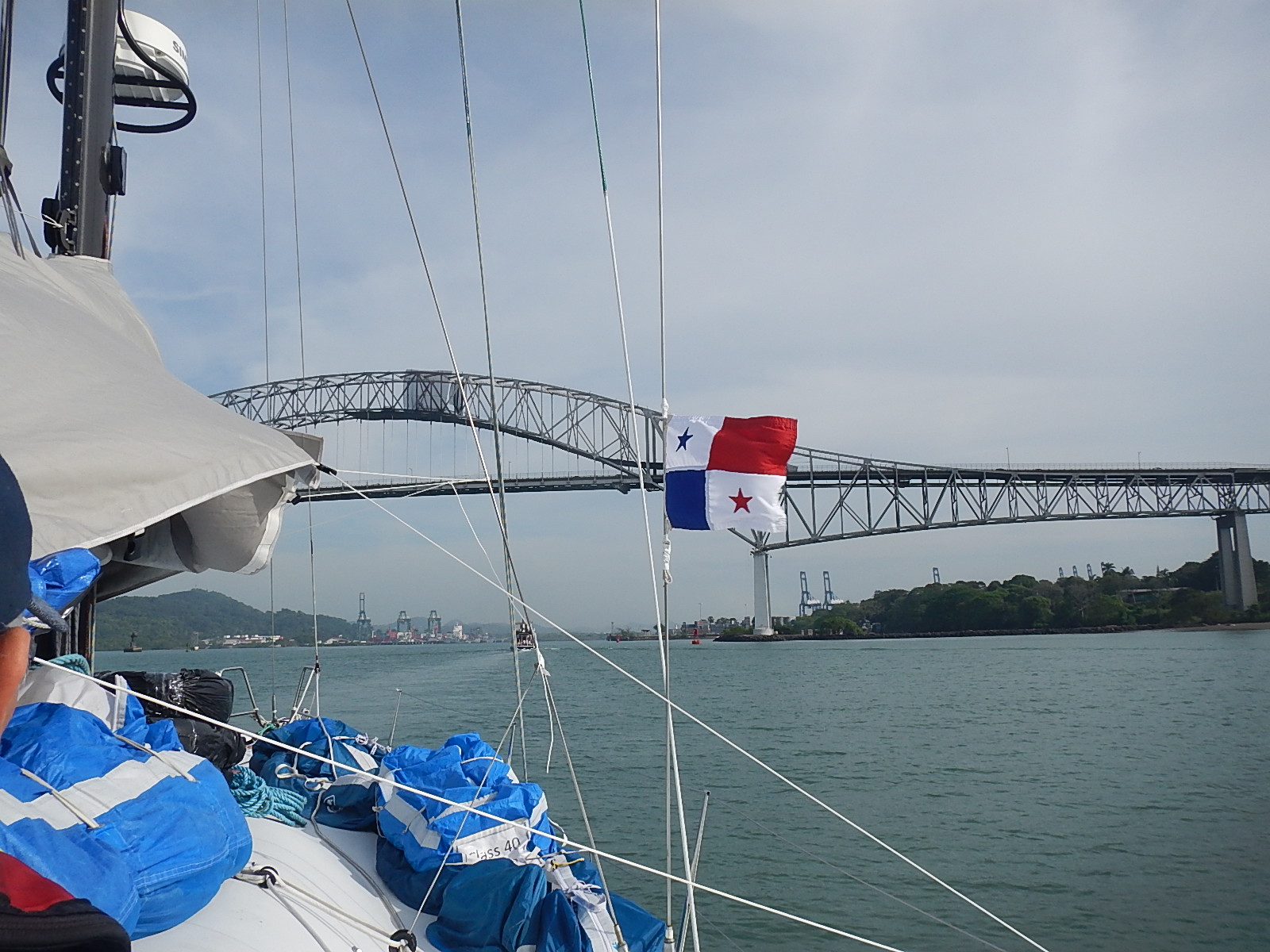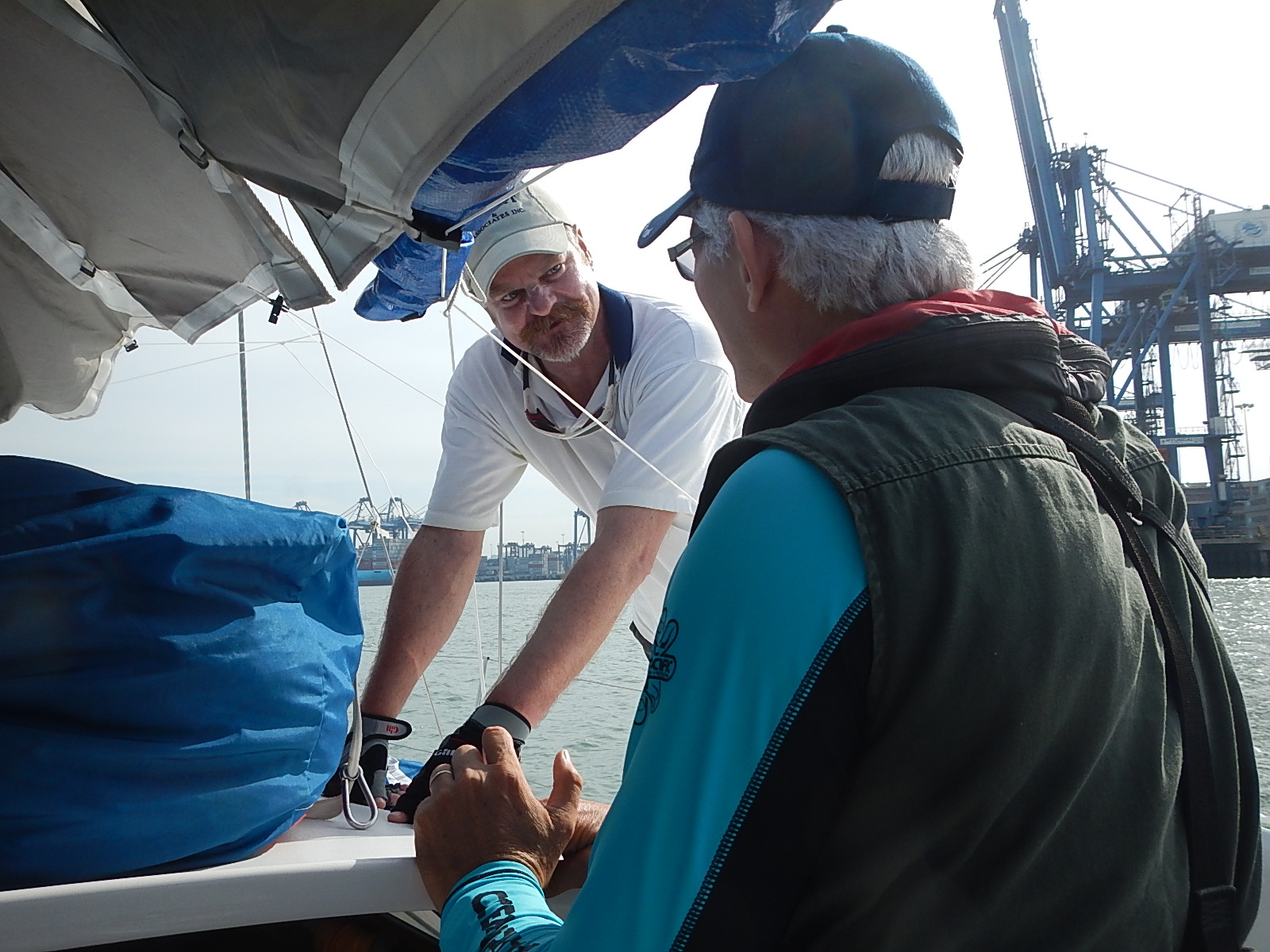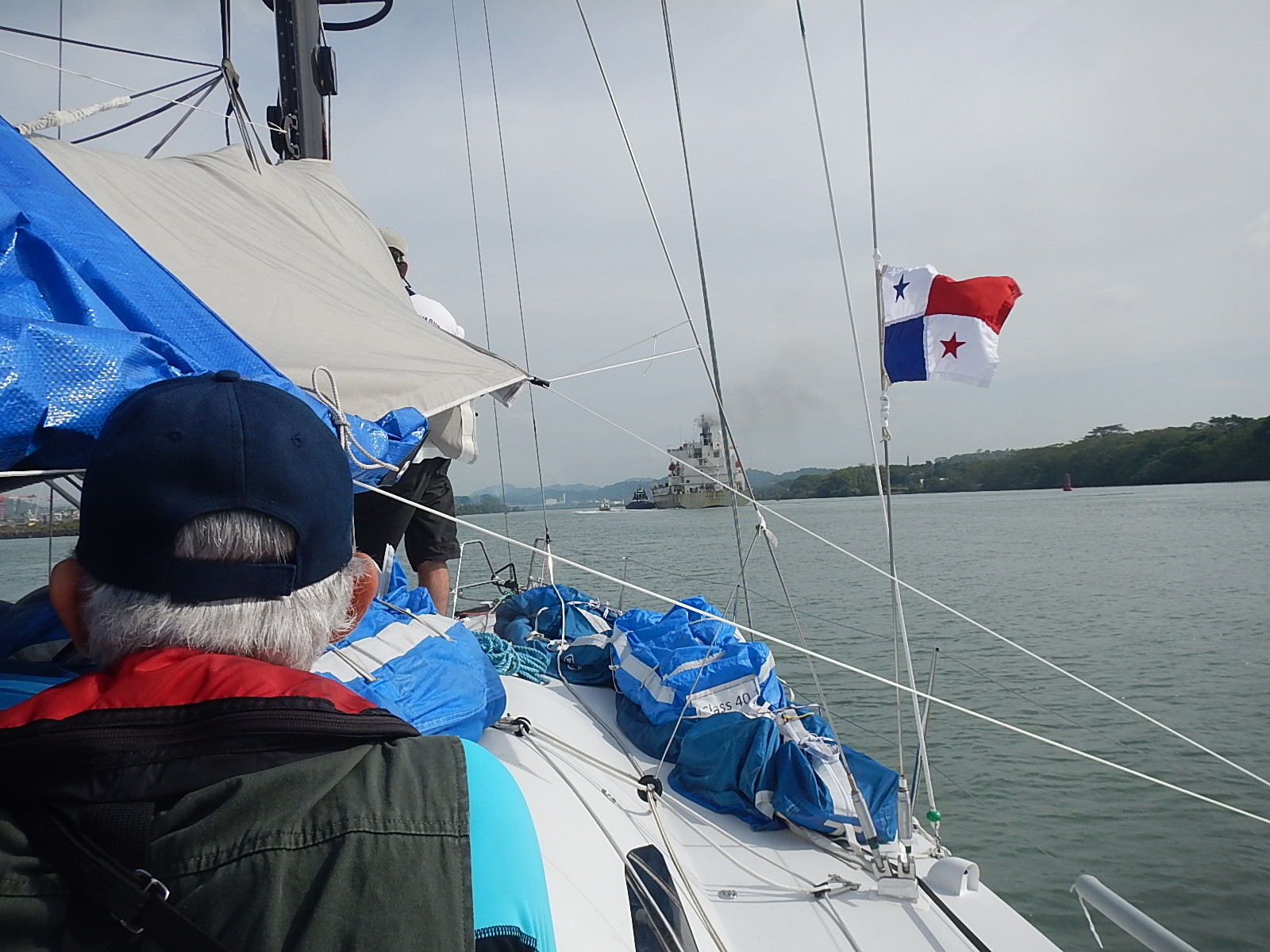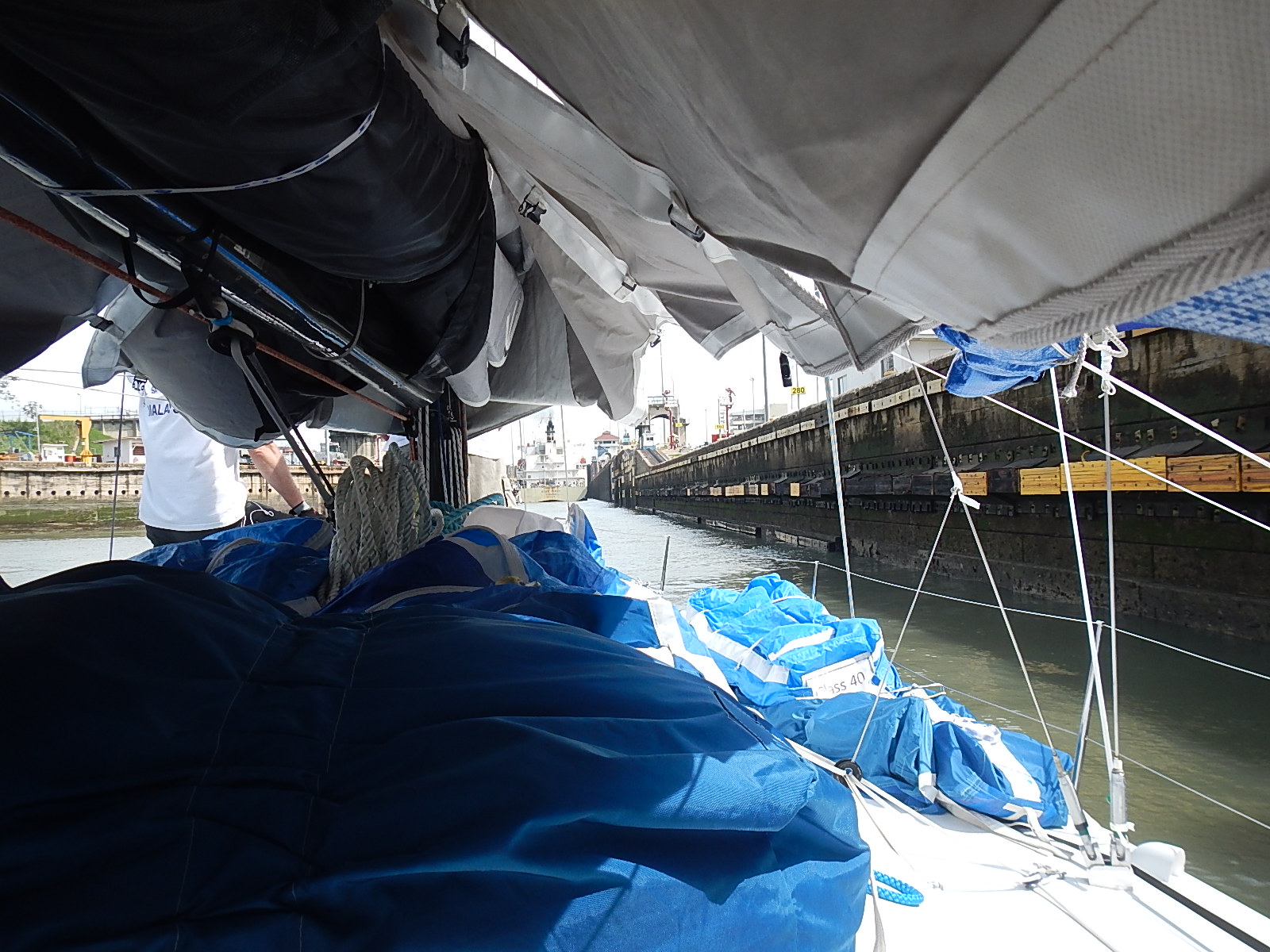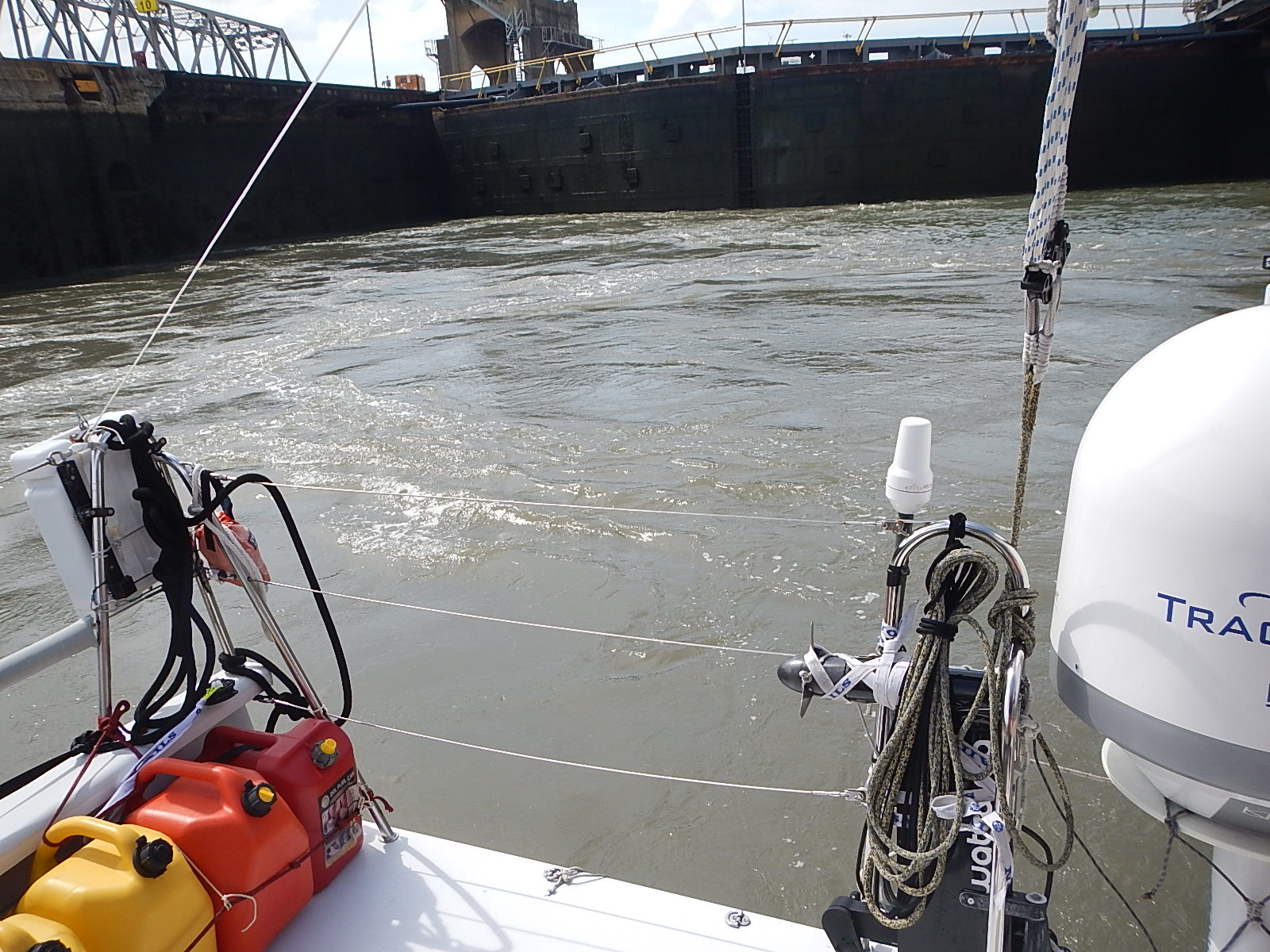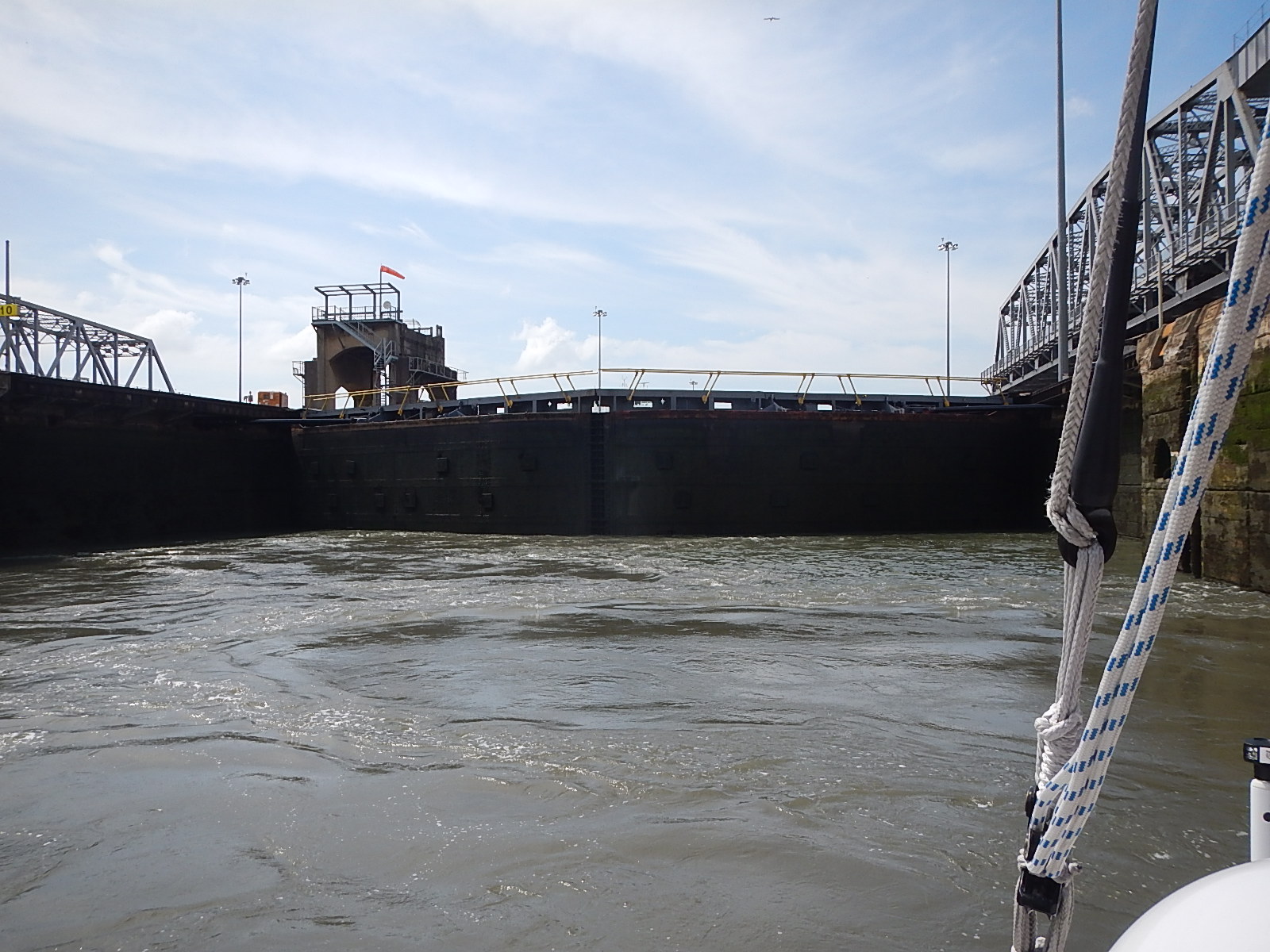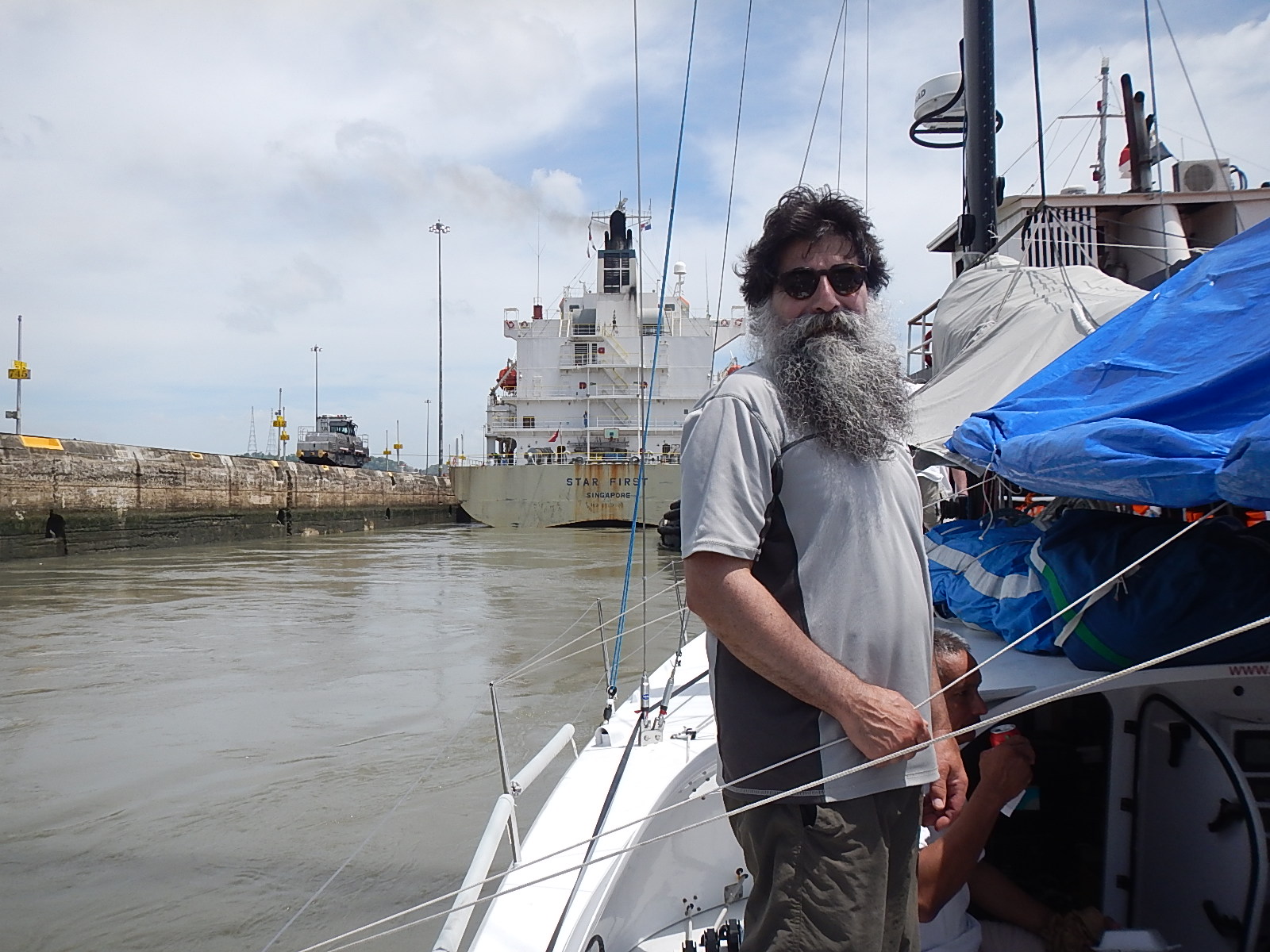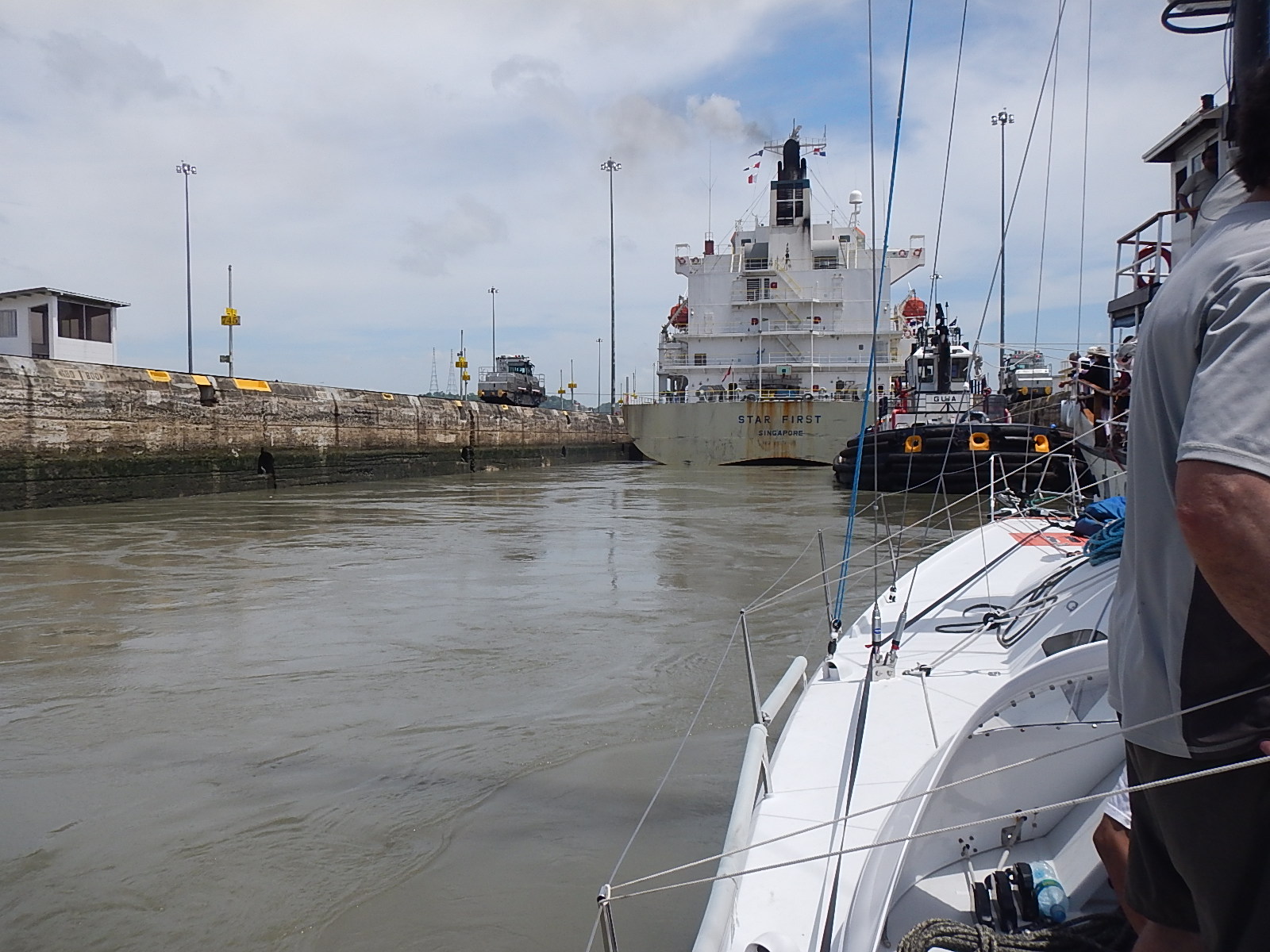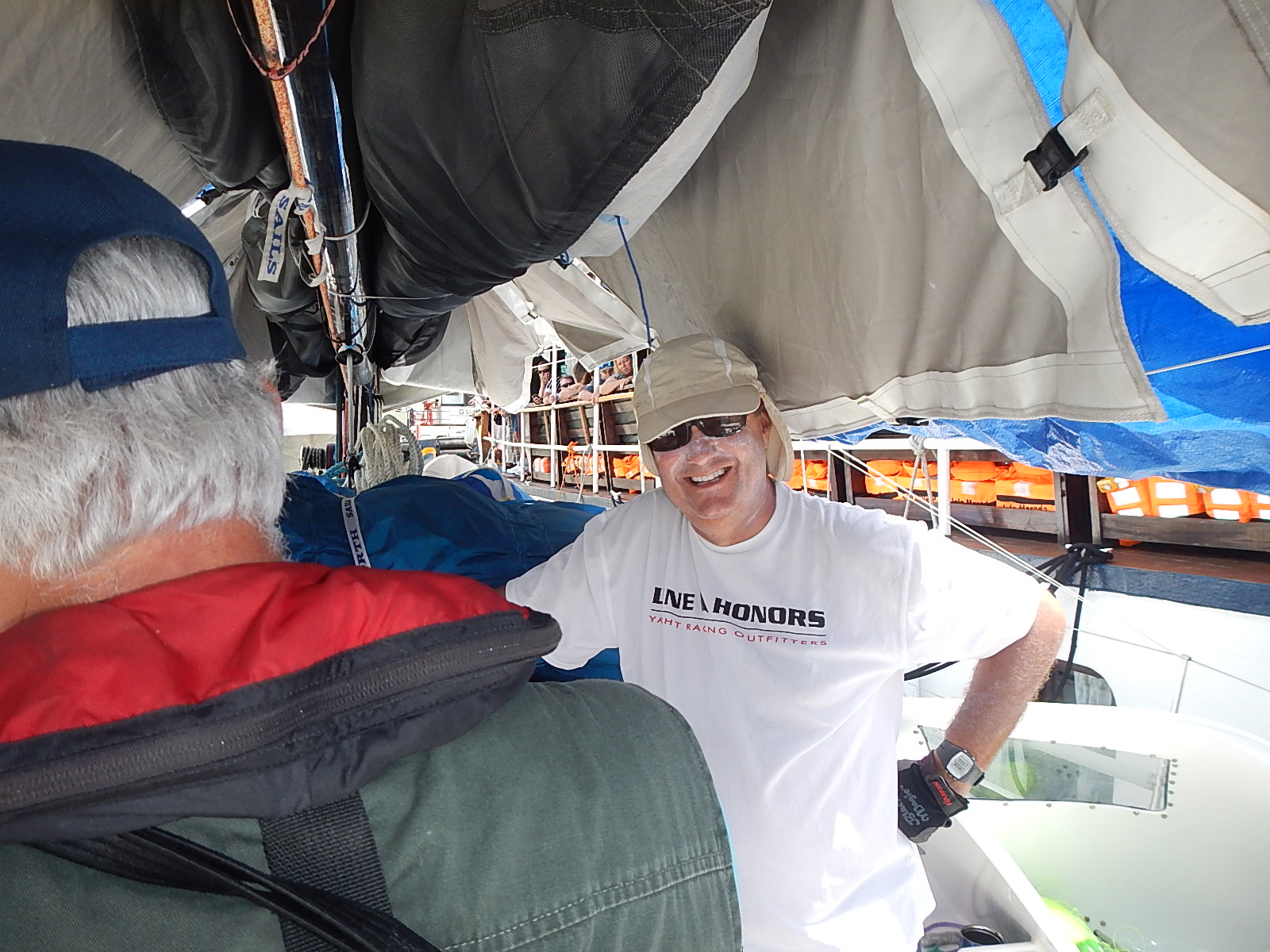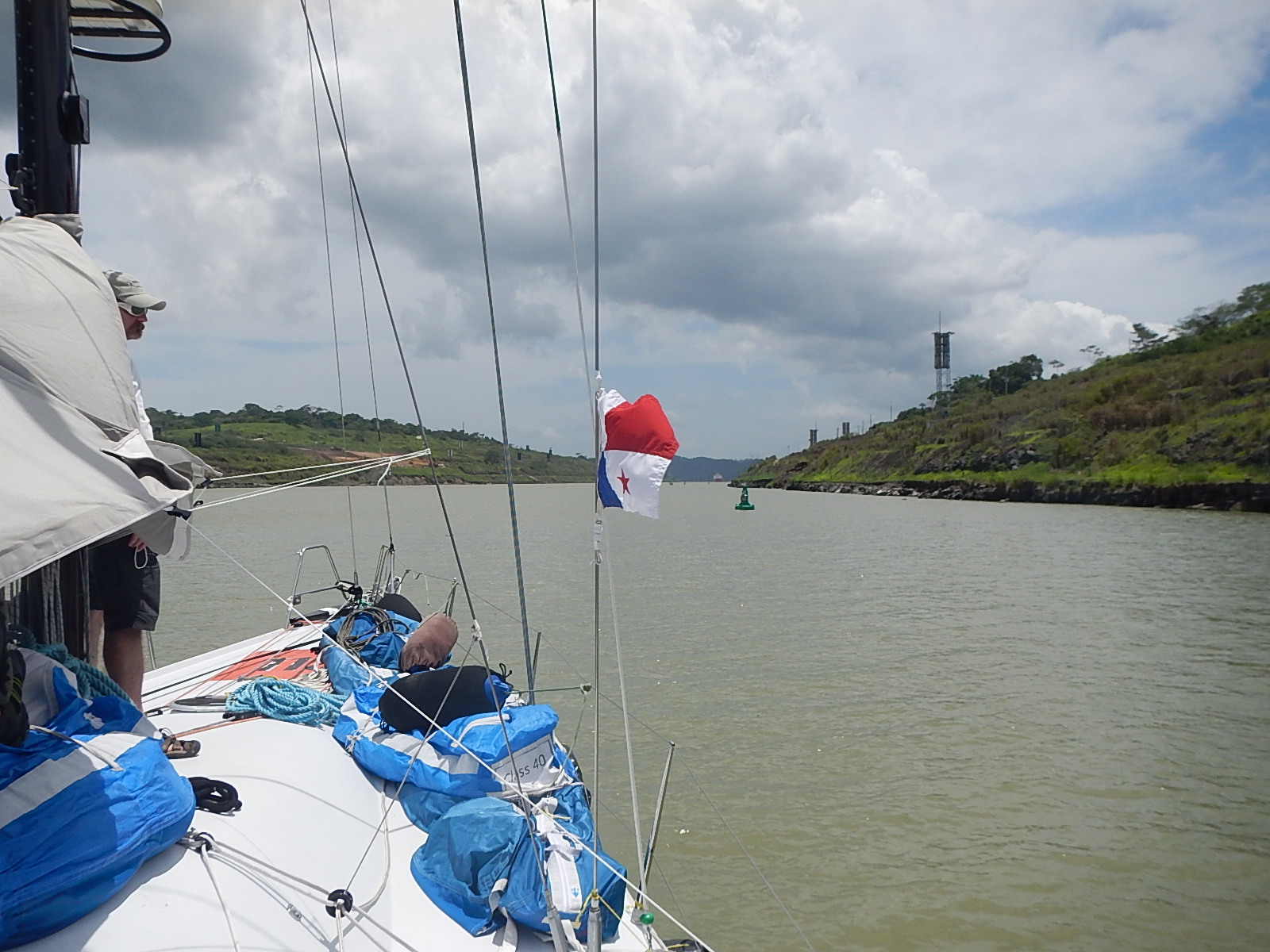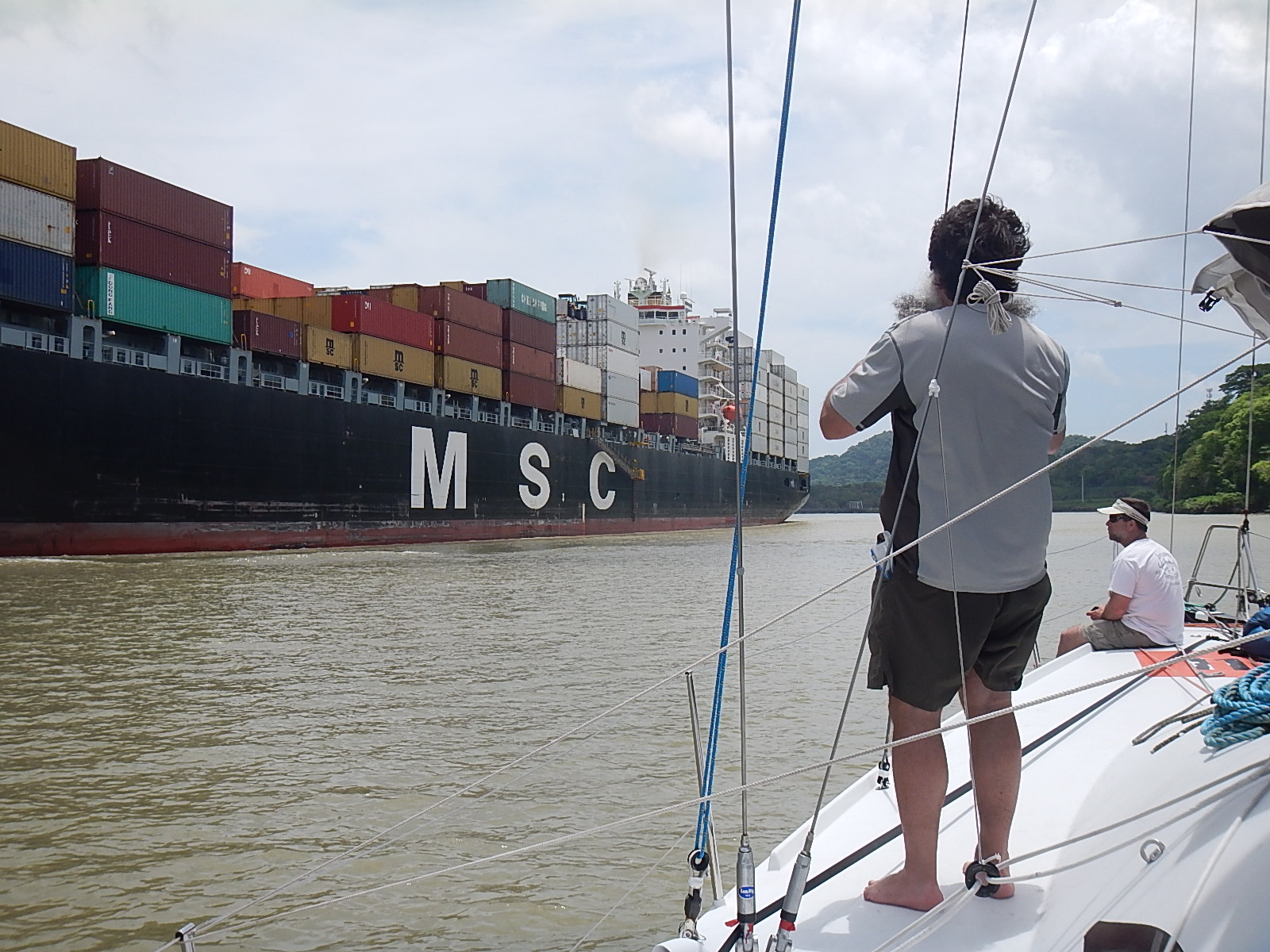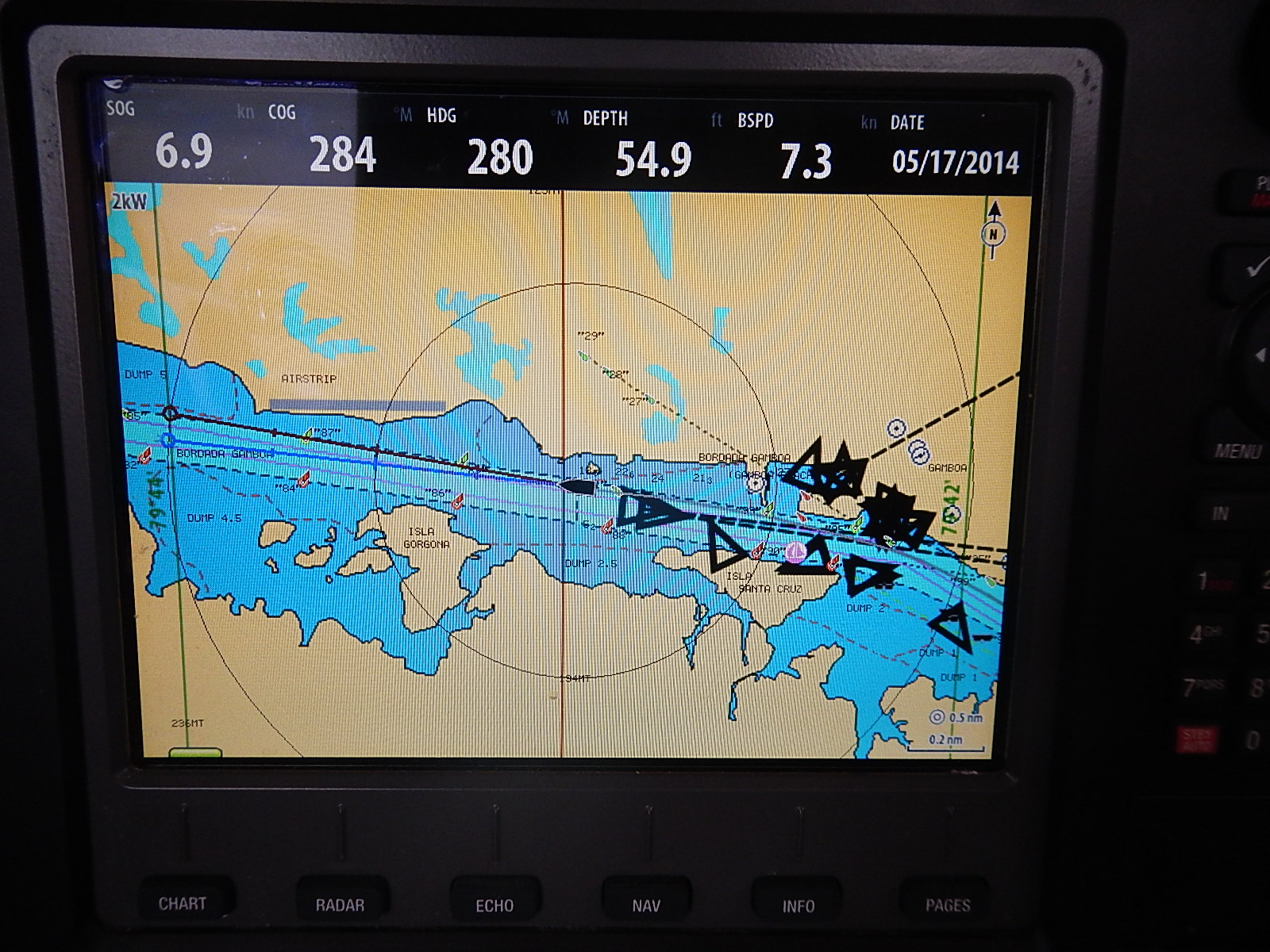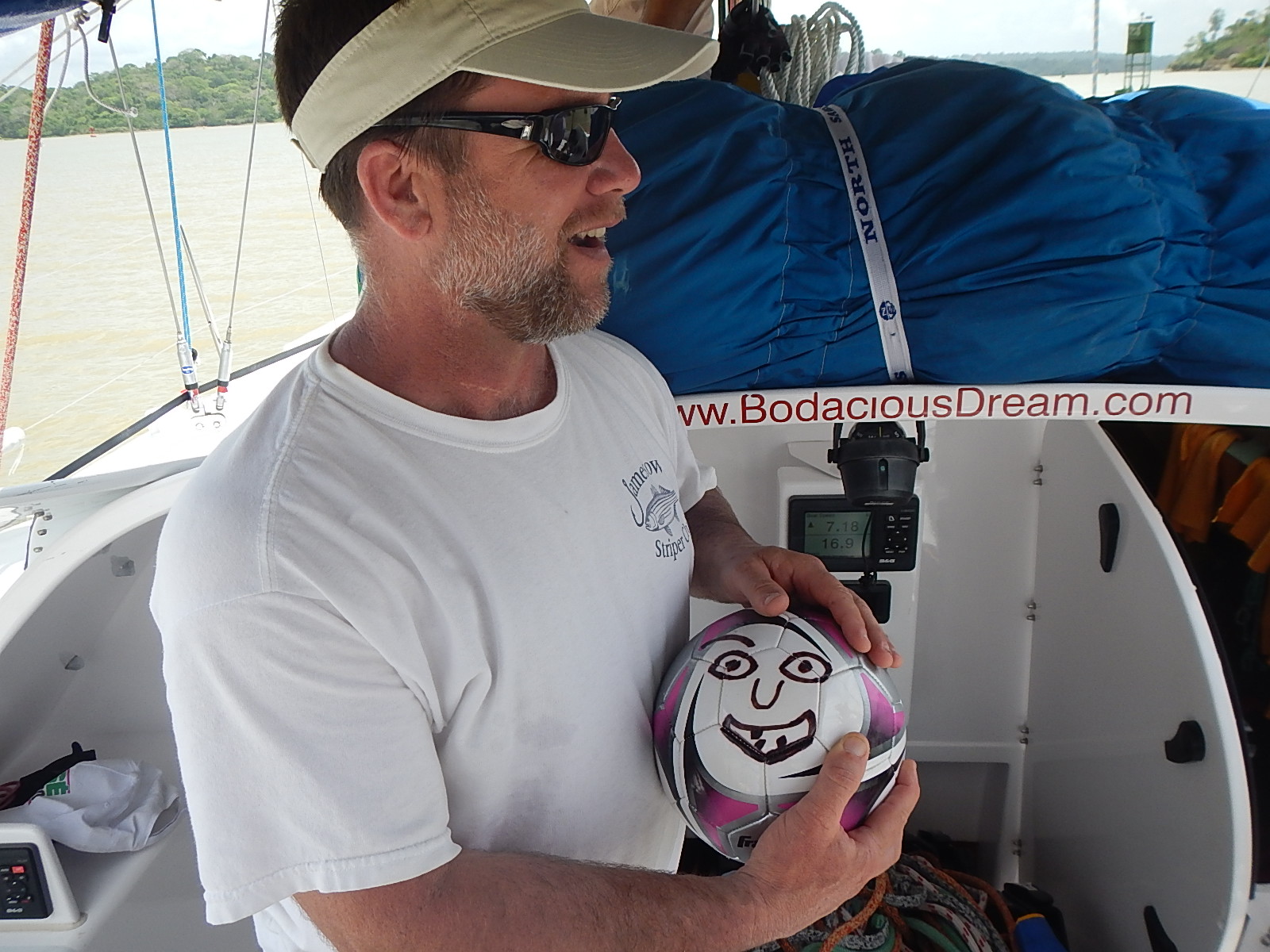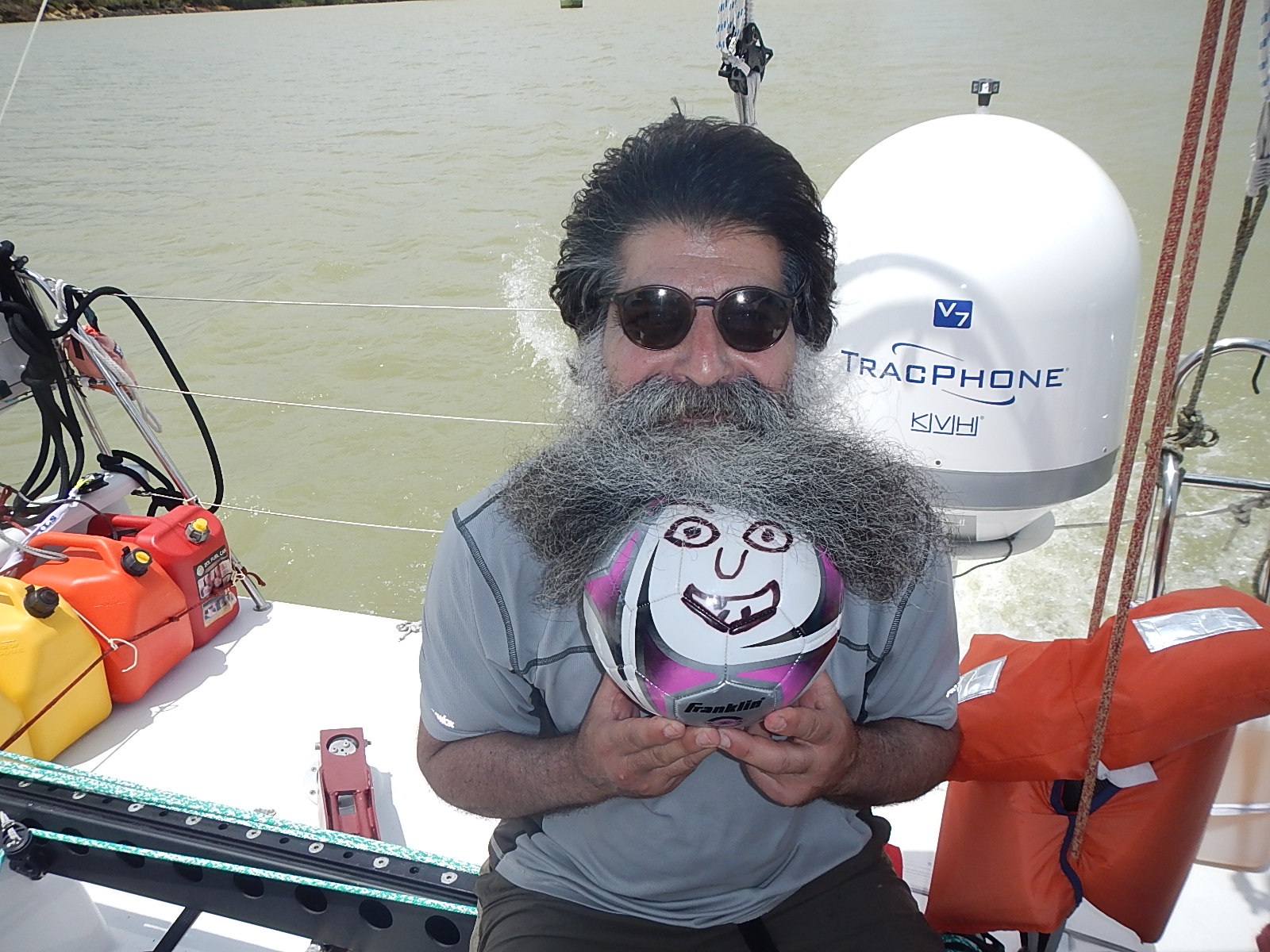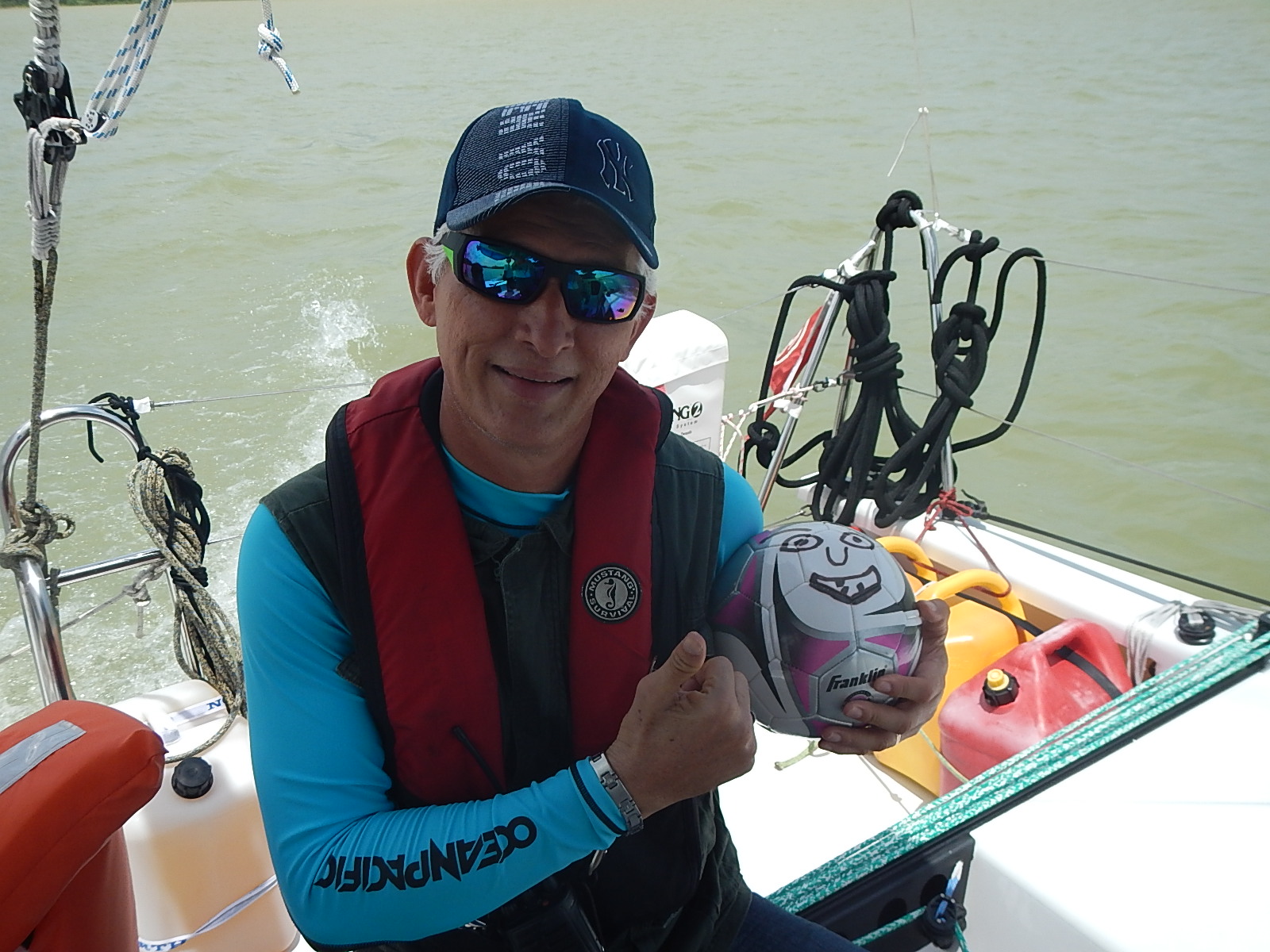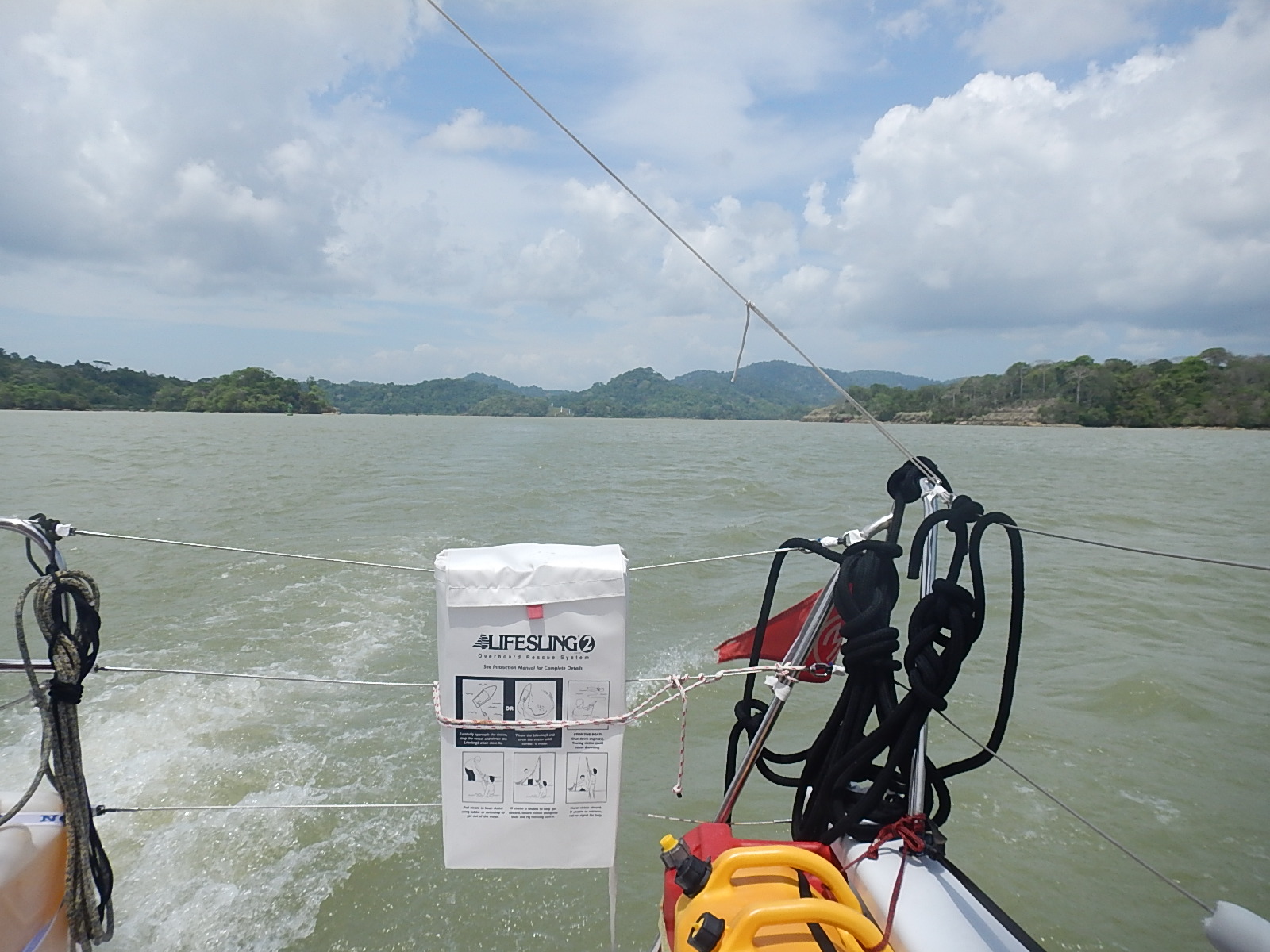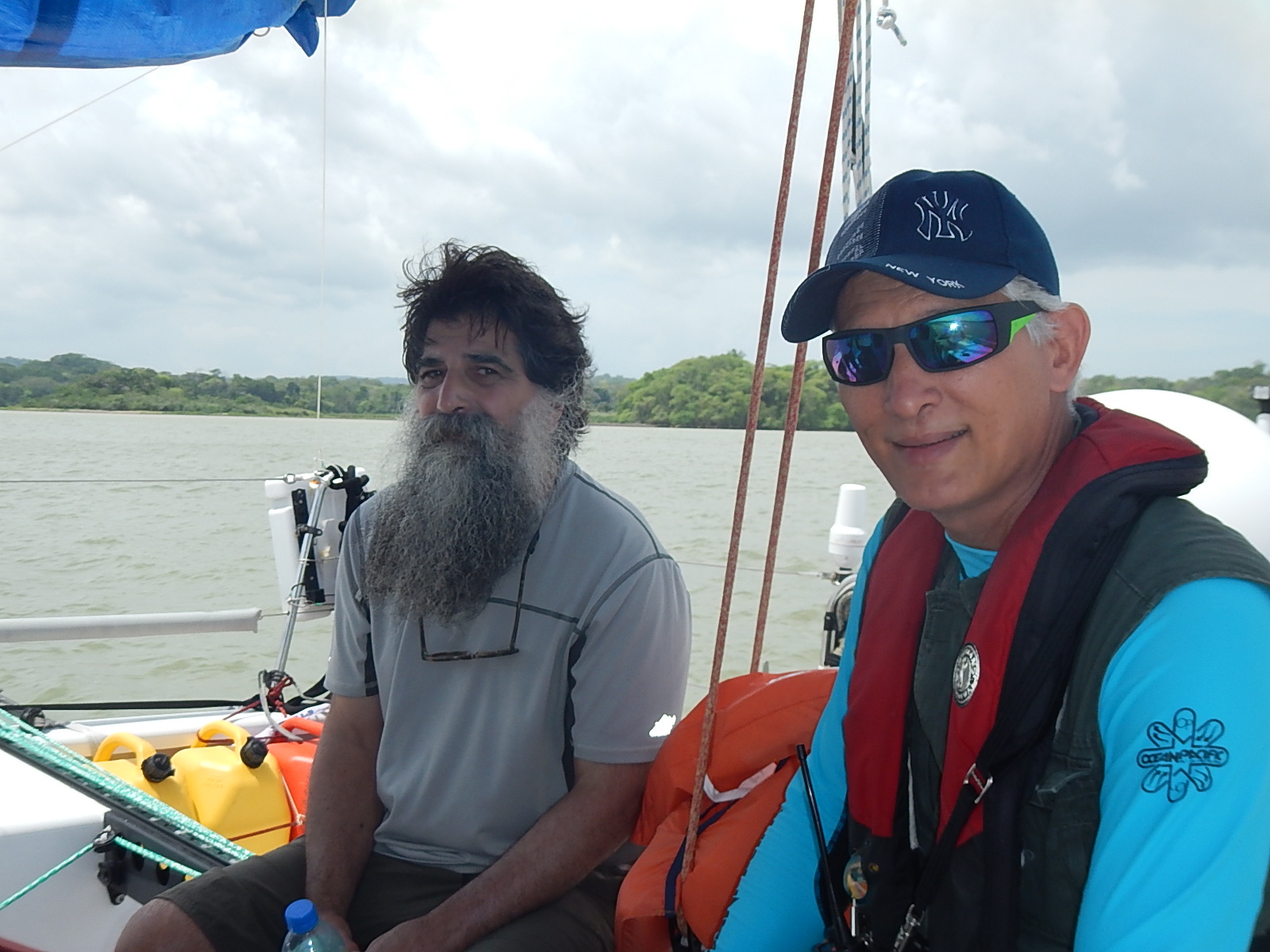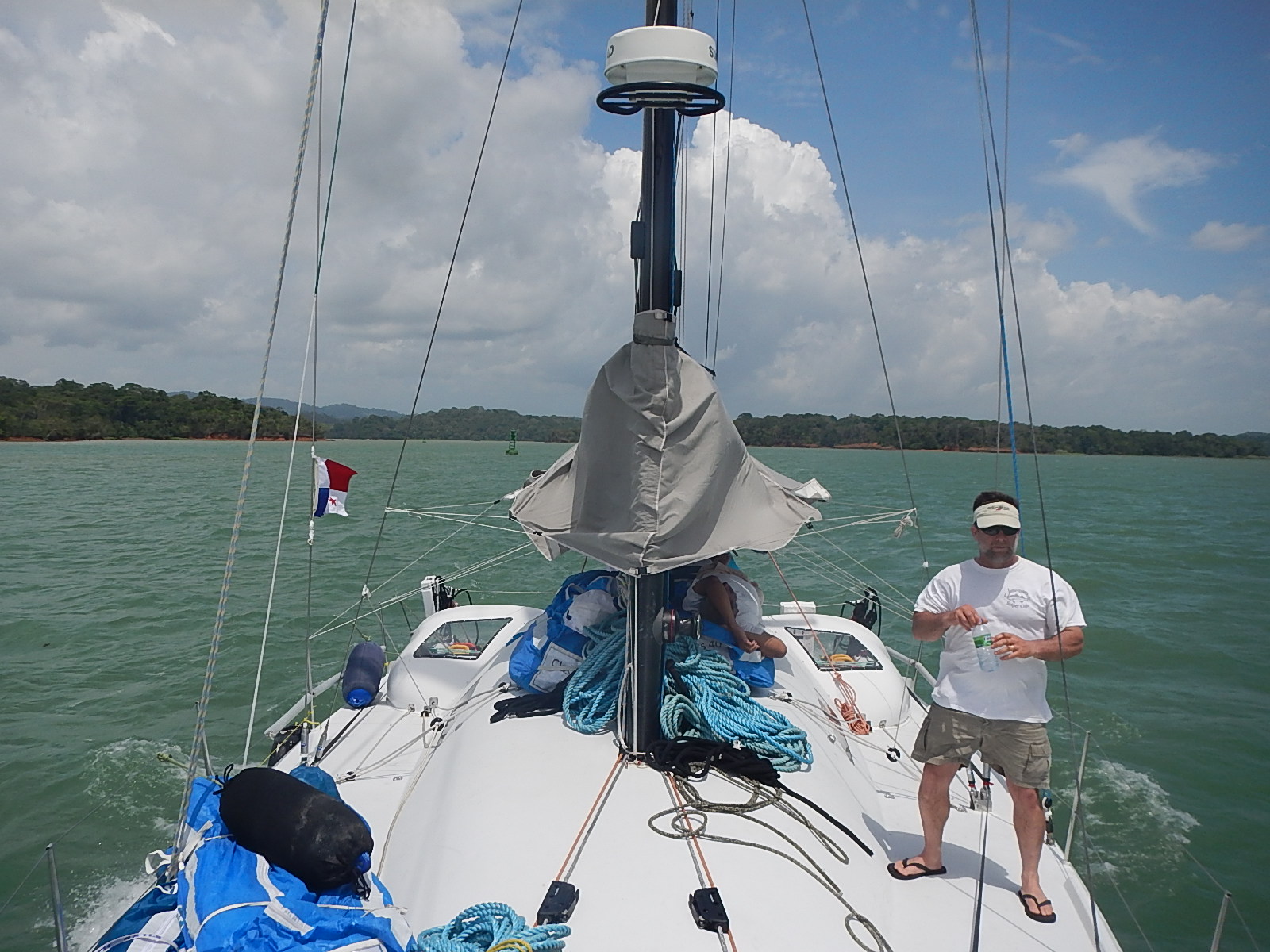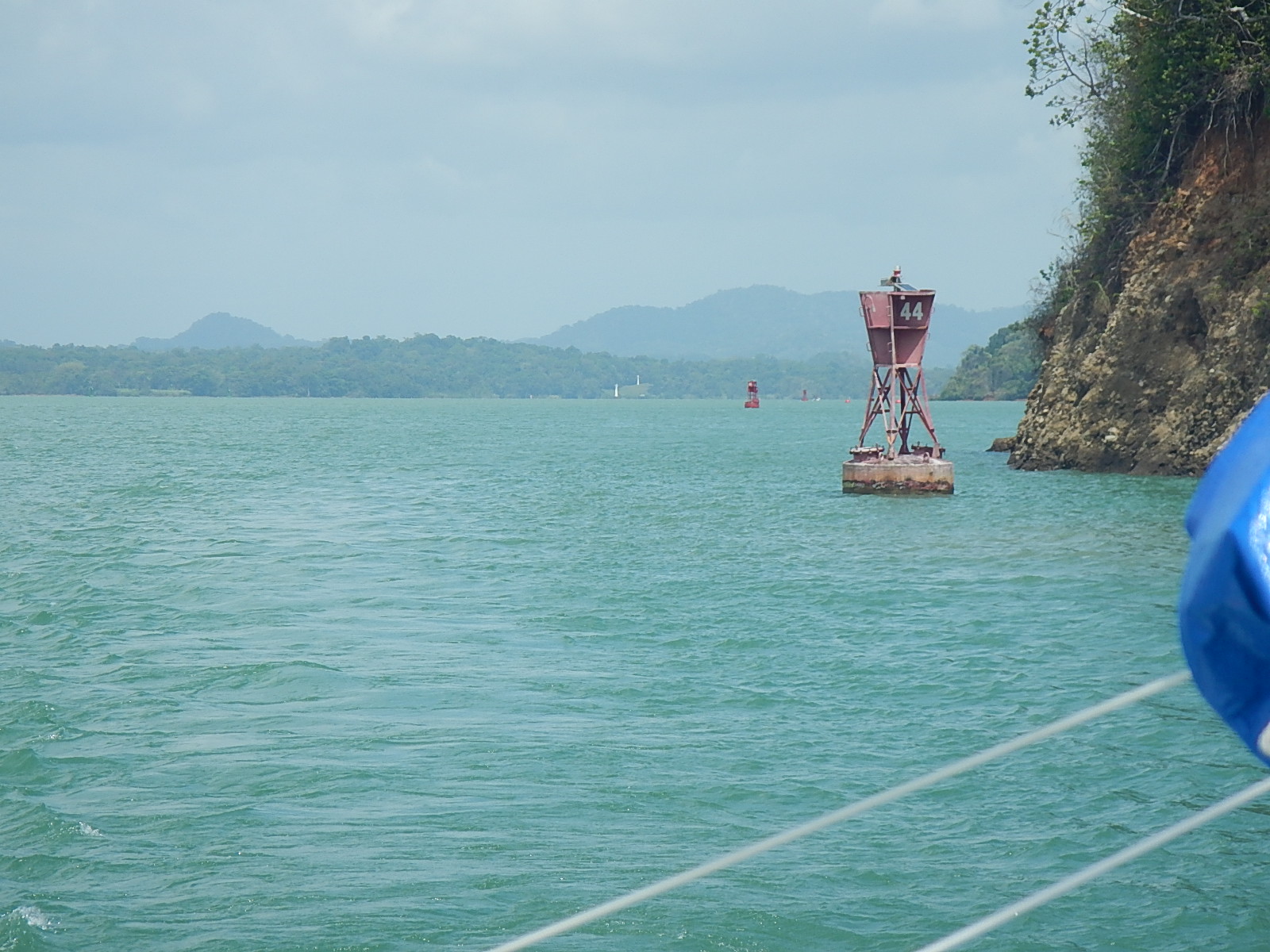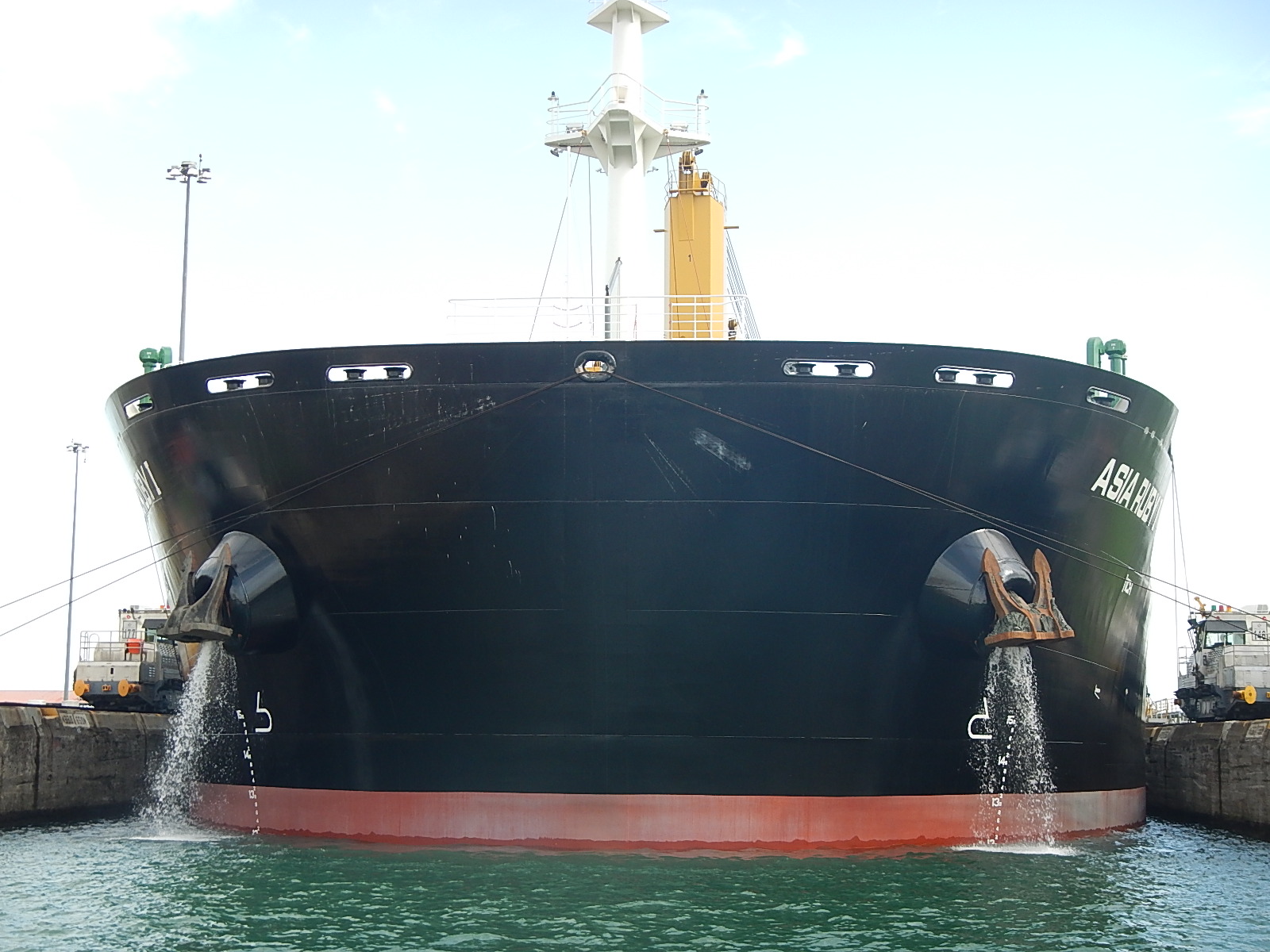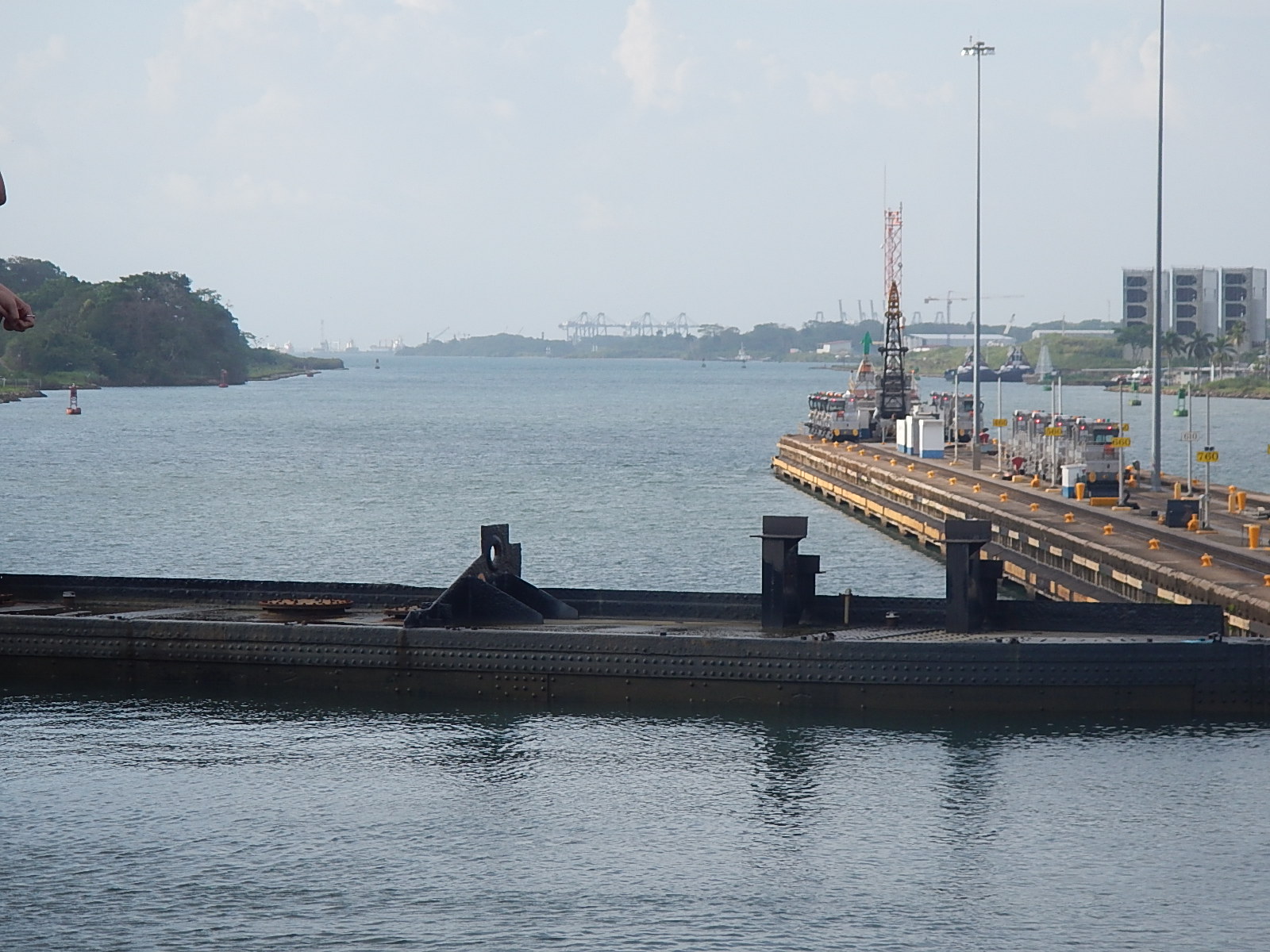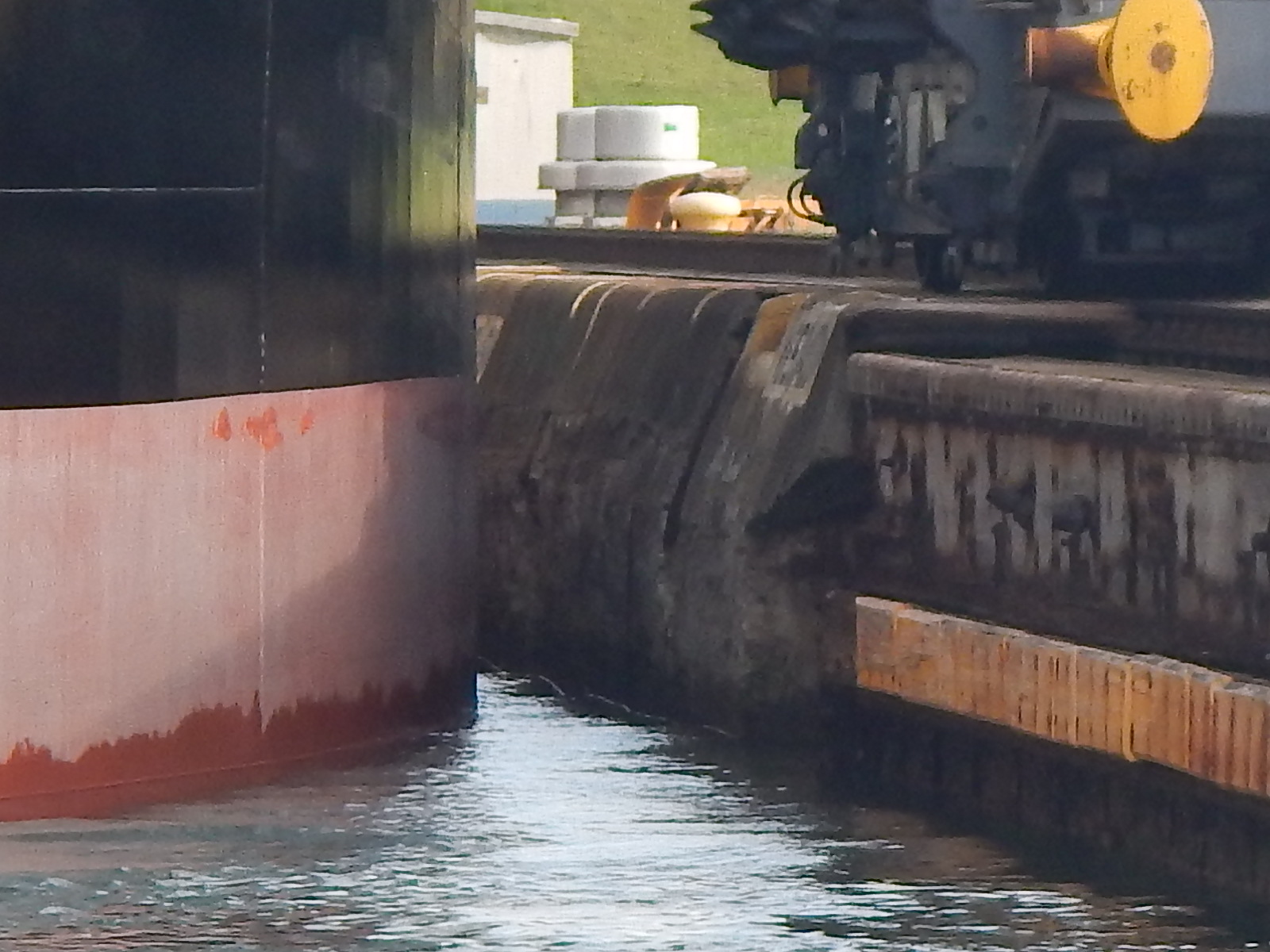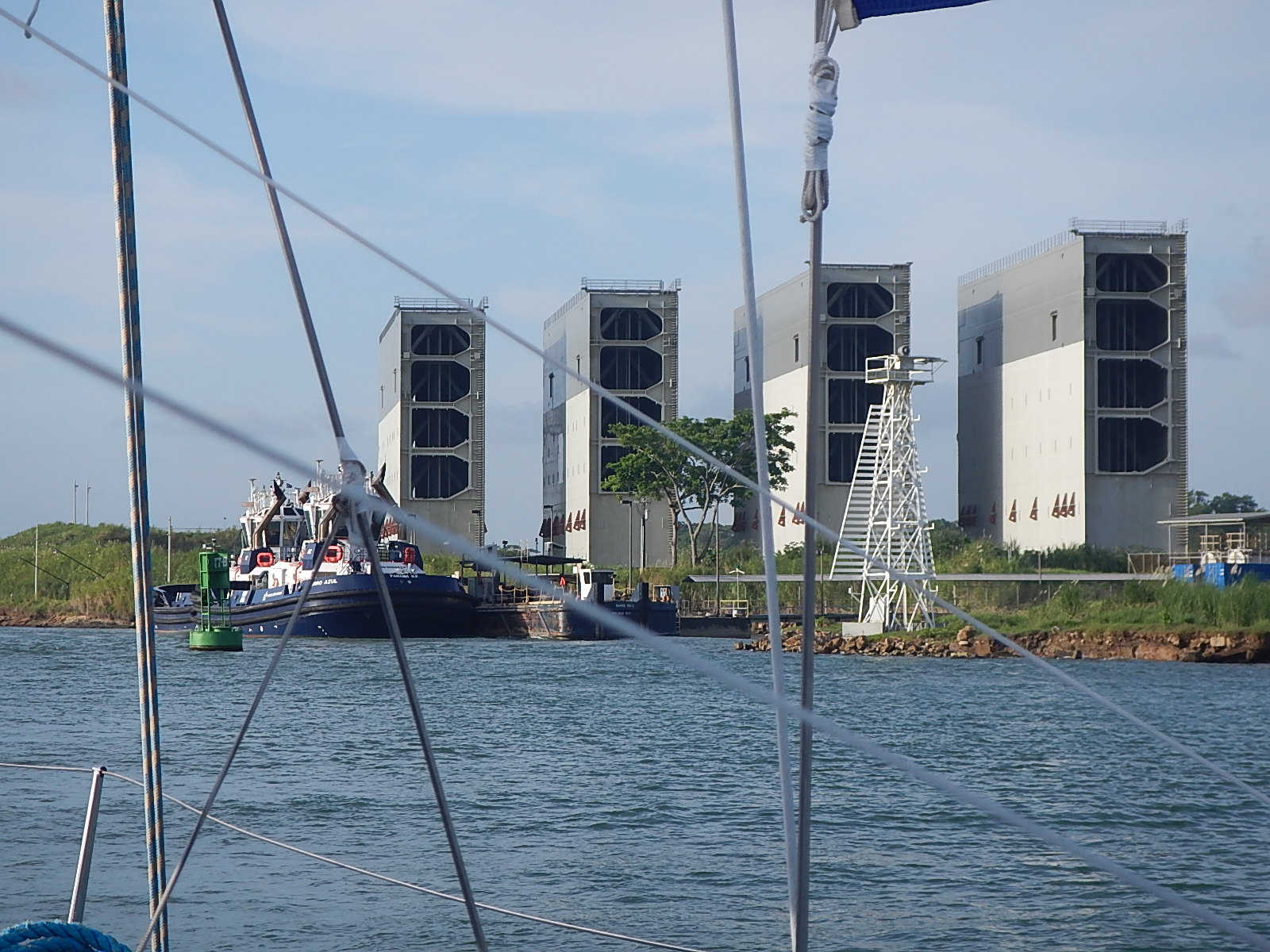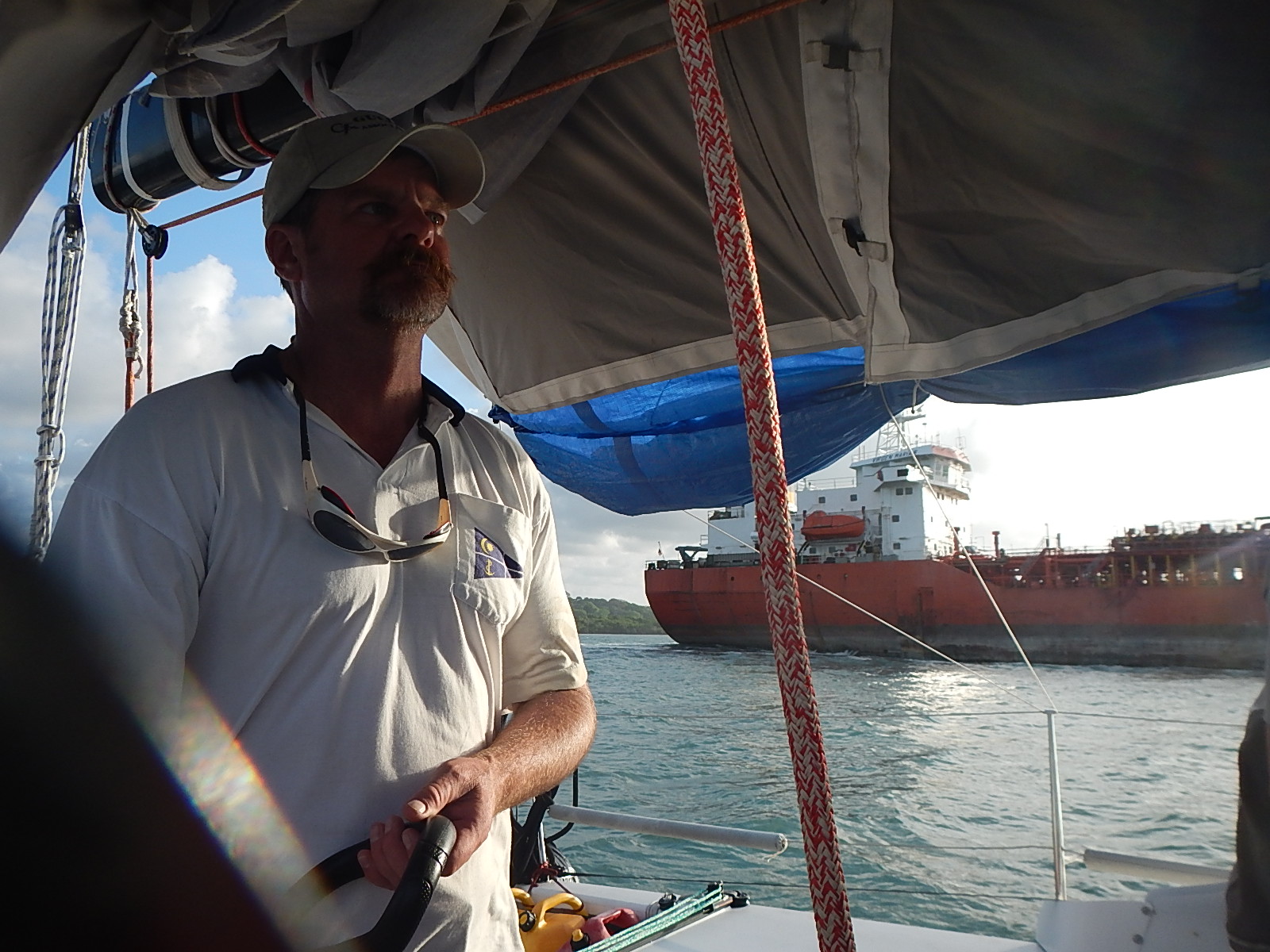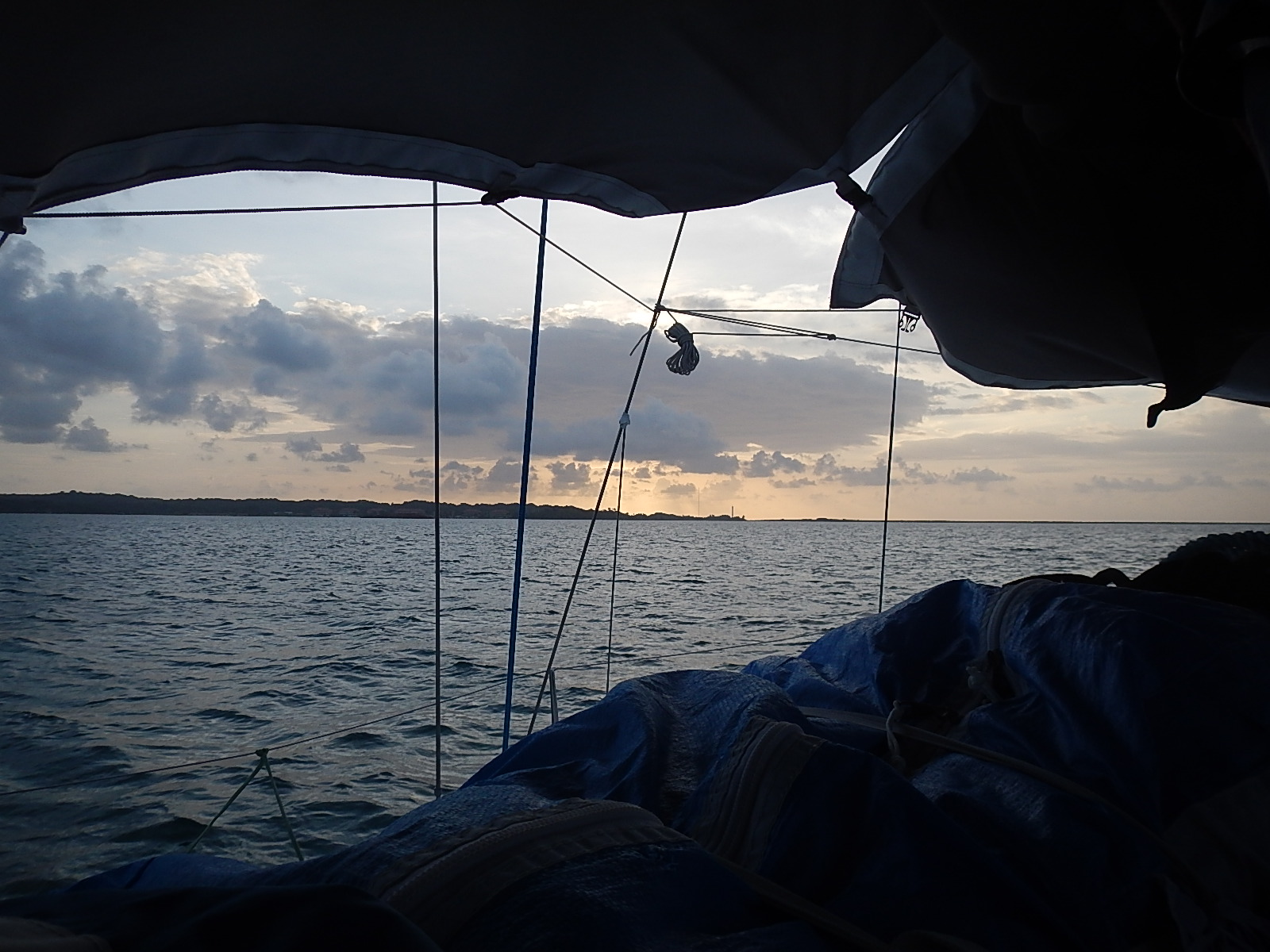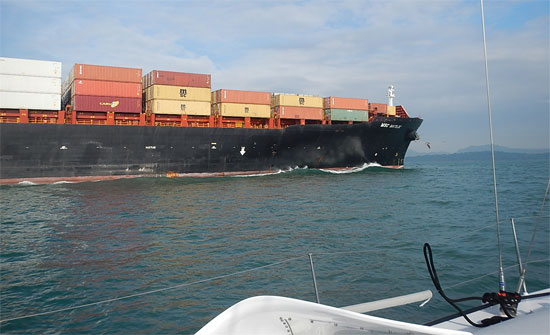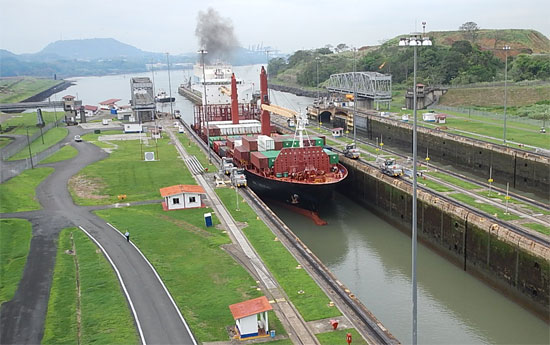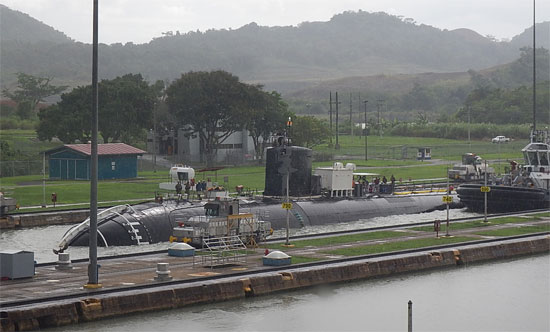Approaching the end of a week in Panama that saw Bodacious Dream transiting the Panama Canal… from the Pacific to the Atlantic Ocean in just 12 hours!
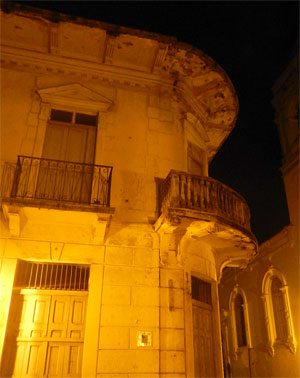 It’s early morning on Thursday and I’m heading down to the marina to put final provisions and water onto the boat and hopefully, by the time you read this, I will have departed. Our course will take us north towards the Yucatan passage that runs between Mexico’s Yucatan Peninsula and western tip of Cuba. From there, I’ll cross the Gulf Stream and skirt the Florida coast as I head to a stop-over in West Palm Beach.
It’s early morning on Thursday and I’m heading down to the marina to put final provisions and water onto the boat and hopefully, by the time you read this, I will have departed. Our course will take us north towards the Yucatan passage that runs between Mexico’s Yucatan Peninsula and western tip of Cuba. From there, I’ll cross the Gulf Stream and skirt the Florida coast as I head to a stop-over in West Palm Beach.
The time here in Panama City has been fascinating. The city is lively and full of folks from all over the world. There is a great rejuvenation going on in the old part of the city where fine old buildings are being restored and renovated to accommodate stylish shops and fancy restaurants. The feel around here is vibrant. However, as all good journeys must continue, so must this one as well.
I expect the next few thousand miles will unleash a rush of memories that have stored up inside me since I departed Jamestown, RI on October 2nd of last year. I have no doubt that among those thoughts will be some more philosophical in nature … reflections on our amazing oceans and planet Earth. The time left on the voyage will pass quickly, but the memories I am sure will remain with me for many years to come – so I will try to share them with you here as they arise.
:: Marine Debris
One of the questions I get asked often is how much debris I see out on the water. I have to say that for most of the voyage and especially in my crossing of the desolate Southern Ocean, I didn’t see that much debris. Remember though, my course has taken me very far from land … except when arriving or departing from my scheduled stops.
Recently however, as I got to about 150 miles from Panama, I began to see floating debris everywhere. I would no sooner spot a floating piece of plastic and watch it trail off behind me, then I’d see another in front of me. One night on the approach to Panama, I heard the sound of something hard hitting the deck. I was below and suspected a piece of mast hardware had come loose and fallen. With flashlight in hand, I scanned around and found an old plastic cigarette lighter that had somehow been tossed up across the bow. I picked it up, and thought to myself …”This is not supposed to be here.”
As I learned on this trip, there is quite a field of scientific study that has built up around how man-made debris moves around in the ocean. Some special learnings for me came from a book I read called, Flotsometrics, written by Curtis Ebbesmeyers and Eric Scigliano.
Curtis spent his life as an engineer and oceanographer, first working on important issues with oil platforms: wave heights, sewage disposal and things of that nature. But along the way, as he studied the waters of Puget Sound in the northwest corner of the U.S., he became more and more fascinated with the general drift of ocean waters and what are known these days as the great “Gyres.” At present, oceanographers have identified five of these great gyres and 5 more minor ones.
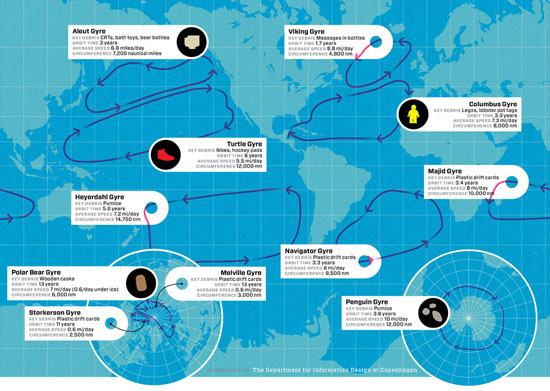 Click here to get a larger version.
Click here to get a larger version.
The book was one of a selection given to me, just before I departed by Tegan Mortimer, our scientist colleague from Earthwatch, who thought I might find it intriguing. The book explains how through the centuries “drifters” (items tossed into the sea to see where they would end up, like notes in a bottle, etc.) have been used to satisfy people’s wide-ranging curiosities about the world. From Columbus, who in observing various items floating in the sea and washing up on the shore, took it as evidence that there were other continents not that far away, to ancient peoples who commonly gravitated to specific beaches that collected the flotsam of the ocean. In many cases, these items helped provide these people with some of the necessities to help grow their civilizations. I found this book just fascinating, and especially how it was told in such a wondrous and whimsical way.
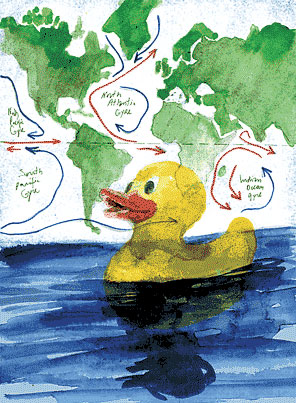 As Curtis’ lifetime unfolded, he became more and more focused on these floating objects, and with the help of another software engineer friend, he began to use computers to model and predict the travels of the “drifters.”
As Curtis’ lifetime unfolded, he became more and more focused on these floating objects, and with the help of another software engineer friend, he began to use computers to model and predict the travels of the “drifters.”
Imagine the fun he had following and logging data on the 80,00 pairs of Nike shoes lost when a container ripped open off the coast of California, or that other famous lost container full of 28,800 actual yellow rubber ducky bath toys! Along the way, he also tries to solving the mystery of those duckies that floated upright, guided more by the wind, as opposed to those that floated upside down, more directed by the water.
This is truly a book that I can see reading and sharing with kids, as it inspires one to think and imagine more grandly the many interesting and serendipitous ways the oceans of the world interact with each other.
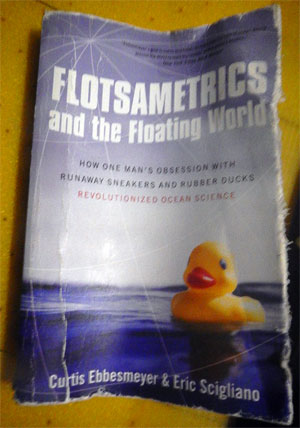 The part that especially captured my imagination and provoked me to write this came in the final chapter, Harmonics of the Gyres. With the sun setting into the western sea, I squinted to keep reading about how after years of study, he came to see that these gyres spin in predictable revolving patterns – revolutions that could be measured in years, and he saw how each gyre when compared to one another were separated by factors of two.
The part that especially captured my imagination and provoked me to write this came in the final chapter, Harmonics of the Gyres. With the sun setting into the western sea, I squinted to keep reading about how after years of study, he came to see that these gyres spin in predictable revolving patterns – revolutions that could be measured in years, and he saw how each gyre when compared to one another were separated by factors of two.
As he thought about it, it occurred to him that this was also the basis for our typical musical octave – our common scale – do, re, me, fa, so, la, te, do. So he saw that potentially, though far below the audible range of human beings, the earth’s oceans may have a similarly harmonic scale to them; a rhythm by which the watery worlds vibrate and sing to us, even if it is only our subconscious that hears it.
It caused me to wonder in new ways about why it is I’ve always been so pulled to the waters of the world. How can I sit on the shore and stare off to the horizon for such long lengths of time? Why am I drawn to do what I’m doing, sailing across the oceans totally immersed in the environment, the boat, the sea and the weather? Perhaps this theory helps explain why some very basic part of me has always been so entranced by the music of the sea.
If you can find the time, grab this book and a map of the world and sit down with your children and explore the world with this whimsical oceanographer as your guide. In fact, I think when I grow up; I want to be an oceanographer too!
– Dave, Bodacious Dream and Franklin (who really liked the rubber ducky part)
:: BDX Website :: Email List Sign-Up :: Explorer Guides :: BDX Facebook

